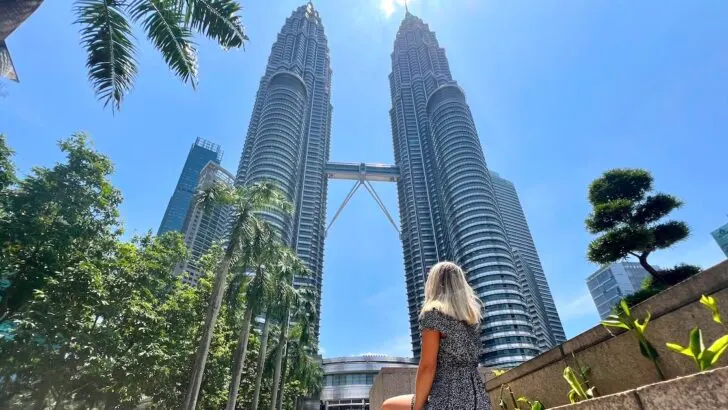After spending 4+ months in Malaysia’s capital city, it’s about time that I share my Kuala Lumpur itinerary.
I have explored Kuala Lumpur in many different scenarios: budget backpacking, luxury condos, digital nomad-ing, and a quick layover.
I can’t help but keep coming back to this city, with its diverse food (Malay, Chinese and Indian), rooftop pools, and temples.
In 2023, I made friends with a group of Kuala Lumpur locals who showed me their favourite neighbourhoods and underrated destinations you won’t find on a typical Kuala Lumpur itinerary.
So, as I dive into all the best things to do in Kuala Lumpur, I’ll also be talking about unusual or underrated spots. I’ll finish the article with my suggested 3-day Kuala Lumpur itinerary.
Looking for more Malaysia travel guides? Check out my Taman Negara guide and blog post on the Perhentian Islands.
Disclosure: This post includes affiliate links. If you decide to click through and make a qualifying purchase, I will receive a small commission at no extra cost to you – thanks for your support.
QUICK INFORMATION
Best time to visit: November to January; June to August
Time needed: 1 – 5 days
Don’t miss these experiences…
1. Batu Caves half-day tour 🐒
2. Street food tour – with 15+ tastings! 🍜
Best day trips: Taman Negara rainforest or Malacca (UNESCO city)
Where is Kuala Lumpur?
Kuala Lumpur is on the central west coast of Peninsular Malaysia. As Malaysia’s capital city, it covers a huge area measuring 94 square miles.
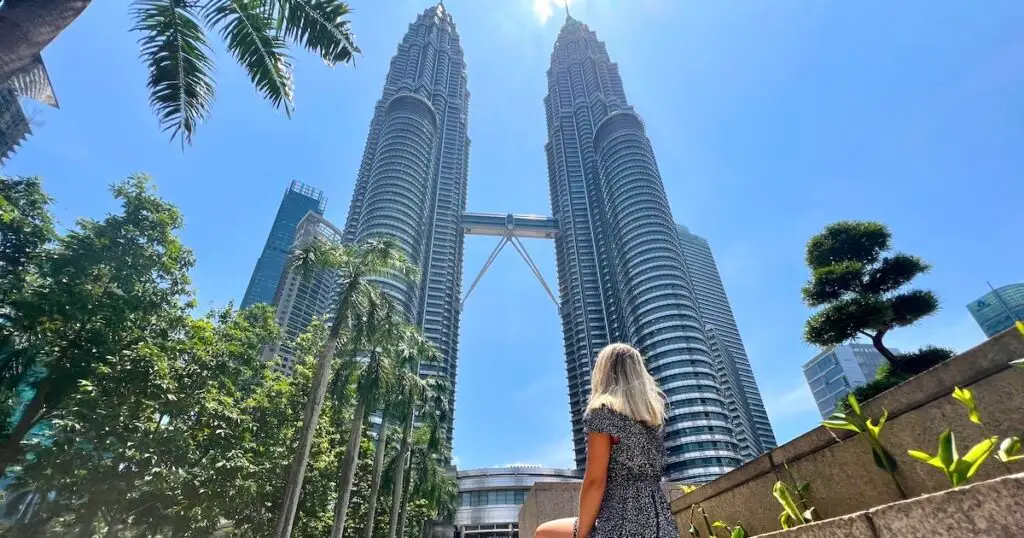
It’s not too far from Singapore (four hours’ drive or an hour’s flight).
The nearest tourist destinations to Kuala Lumpur are Malacca (two hours’ drive) and Taman Negara (3.5 hours’ drive) – these can easily be added to your Kuala Lumpur itinerary.
The city is only an hour’s drive from the Genting Highlands, famous for its casino and mall.
Ipoh, home to many temples, is also under three hours’ drive north.
Is Kuala Lumpur Worth Visiting?
Many people only spend one or two days in Kuala Lumpur.
However, I think it’s well worth a longer stay, based on its food alone.
The city has a really diverse food scene, with Chinese, Malay and Indian cuisine all thriving – Perankan (Nyonya) cuisine has also developed from there, influenced by Chinese, Malay, Indian, and Eurasian dishes.
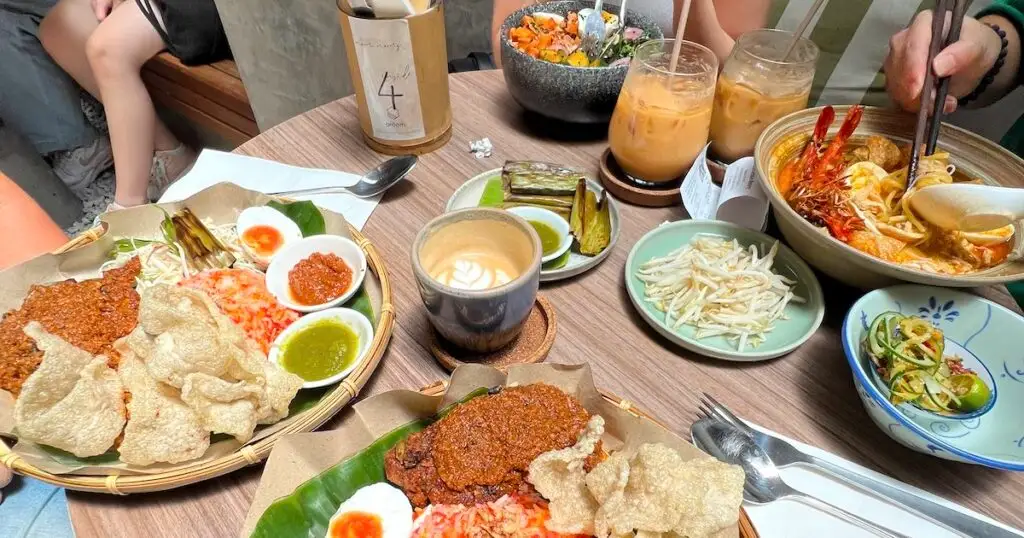
The city also has some iconic images:
The first is the Petronas Towers, a glittering pair of towers that dominate the city skyline.
The second is the Batu Caves, a cave temple complex with a 140-foot-tall statue of the Hindu God Lord Murugan and 272 rainbow-coloured steps.
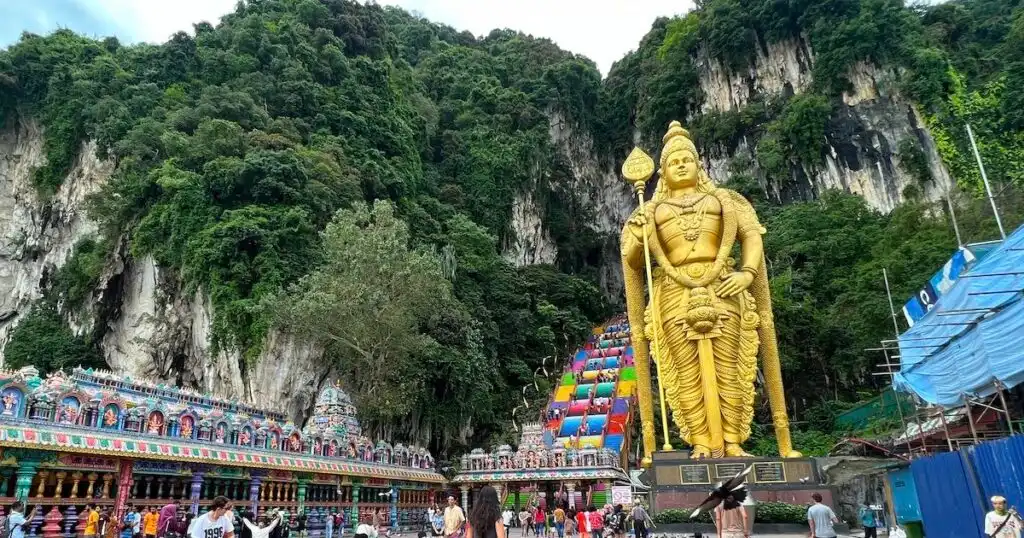
There are many more lesser-known attractions in the city, like Thean Hou Temple, Chin Swee Caves Temple (enroute to the Genting Highlands) and Kanching Falls.
To summarise, Kuala Lumpur is worth visiting for:
- Diverse cuisine: Malay, Indian, Chinese and Perankan cuisine
- Street food and coffee culture
- Temples like the Batu Caves and Thean Hou Temple
- The Petronas Towers
- Hotels with rooftop infinity pools
- Rooftop bars and speakeasies
- Easy access to waterfalls and highlands
My Experience in Kuala Lumpur
I usually visit Kuala Lumpur at least once per year, to say hello to my friends and enjoy the food and views.
My first visit was in February 2023, just after a fast-paced trip down the east coast of Australia.

I was five months into a six-month-long backpacking trip, and Malaysia was a place I’d always been curious about.
I was intent on visiting, so I arranged to meet another backpacker friend in the city.
As luck would have it, I’d also met a group of KL locals at a festival in Jakarta three months prior.
I initially planned to stay one week in Kuala Lumpur, but one week grew into two, and then three.
I was hooked: day by day, I went cafe-hopping, ate incredible food, and at night, I toured the city’s bars. I also took a short trip to Malacca, the nearby UNESCO World Heritage Site.
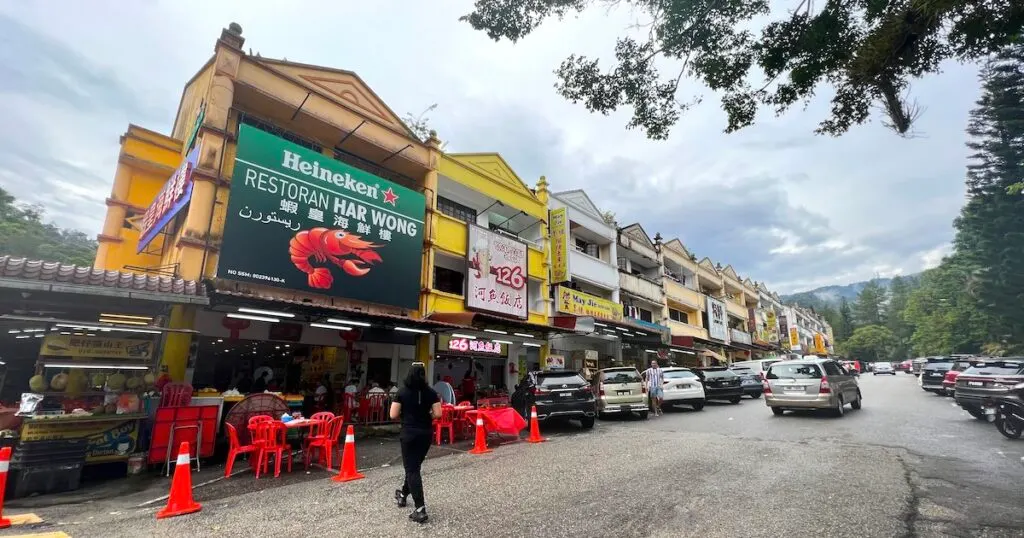
After spending a few weeks in hostels in Kuala Lumpur, I explored more of Peninsular Malaysia with two backpacker friends – we visited Taman Negara, the Perhentian Islands, the Cameron Highlands and Ipoh.
Sadly, I had to cut my trip short because I required emergency ear surgery in Kuala Lumpur (that’s a story for another time…).
However, this meant that I ended up spending another two weeks in the city – yay – before abandoning my plans to visit Borneo to do my incredible Sumatra backpacking itinerary (arriving by ferry from Malaysia).
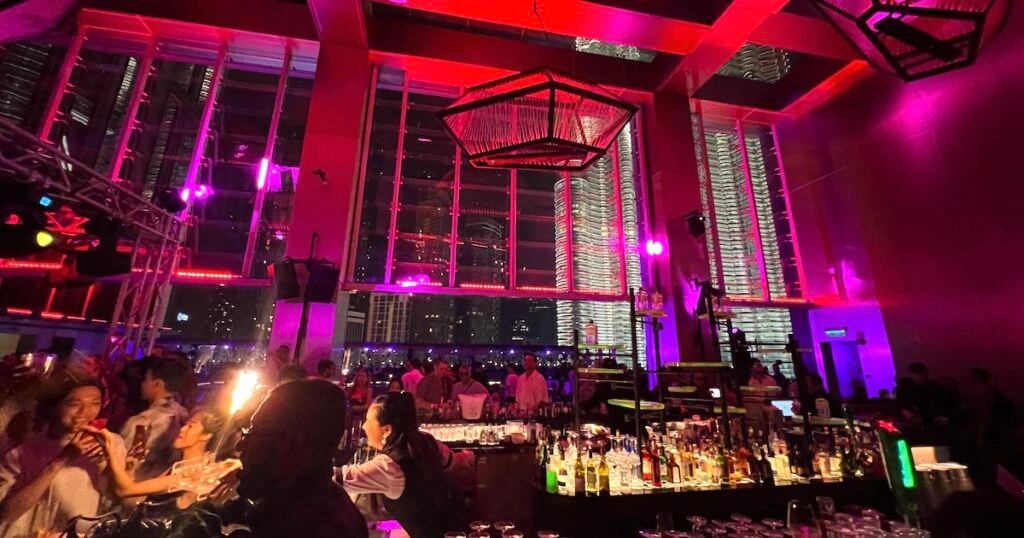
After I returned from Sumatra, I checked into a co-living building in KL for just under three months.
This gave me a whole new perspective on living in the city longer-term.
Since then, I have returned to Kuala Lumpur twice – once in 2024 for just two weeks and once this year for an extended one-week layover.
Where to Stay in Kuala Lumpur
During my first stay in Kuala Lumpur, I tried two different hostels: Amethyst Dorm KLCC, very close to the Petronas Towers, and Penthouse on 34 in the popular Regalia Residence.
Penthouse on 34 is the nicer hostel; it has a huge outdoor space with insane sunrises over the city. The building has an infinity pool.
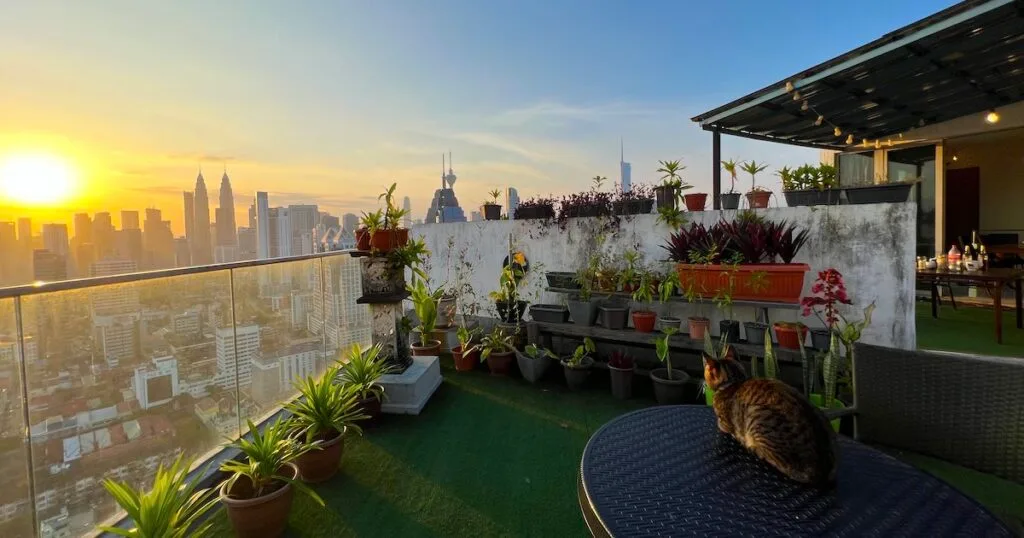

Penthouse on 34
However, it’s very out of the way. To get anywhere except the local mall, you need to take a taxi.
Amethyst is far more central, but it’s small, so it’s best to be out exploring all day.
Later, I stayed at several luxury apartment-hotels after developing an addiction to rooftop infinity pools.
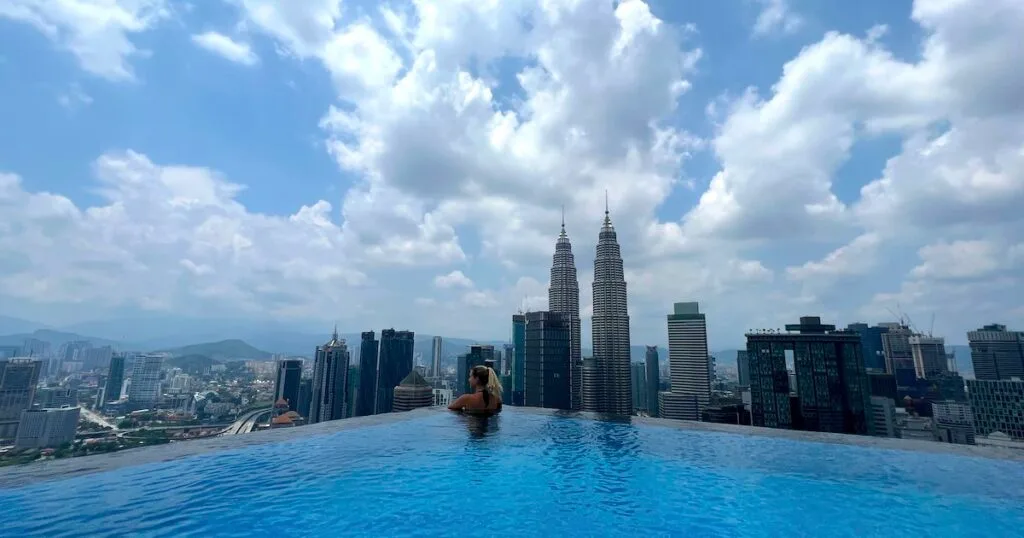
The Platinum 2 Suites
The best was The Platinum 2 Suites, which has an incredible view of the Petronas Towers.

The Platinum 2 Suites (£££)
I stayed here!

Penthouse on 34 (£££)
I stayed here!
A Short History of Kuala Lumpur
As the largest city in Malaysia, you’d expect Kuala Lumpur to have a long history.
However, it was only founded in 1857 by a group of 87 Chinese tin miners.
The tin-mining industry grew rapidly under British colonial rule. Dense jungle was cleared to make room for buildings built by Chinese carpenters, as well as a railway line, prison and school.

The mining industry attracted many merchants, including Chinese, Malays, Indian Muslims and Indian Chettiars who each settled into distinct neighbourhoods.
During World War II, the Japanese captured Kuala Lumpur. However, after the war, the British returned until Malaysia declared independence in 1963.
The Race Riots of 1969 are another key point in Kuala Lumpur’s history.
After the Malaysian general election, tensions between the Malays and Chinese broke out into violence for several weeks. Sadly, 200 people died and over 500 were injured.
My Tips for Avoiding The Crowds…
- Avoid Bukit Bintang – it’s very touristic. Chow Kit, KLCC and Petaling (Chinatown) are better areas to stay and explore.
- Use the Grab app to book cheap taxis from anywhere.
- Utilise Google Maps to check for best-rated restaurants, cafes and other attractions.
- Use a SIM to check reviews on the go. Airalo does a Malaysia E-Sim.
My Picks For the 14 Best Things to Do in Kuala Lumpur
1. Visit the Petronas Towers
Your first stop on your Kuala Lumpur itinerary should definitely be the Petronas Towers.
The pair of skyscrapers, owned by the Petronas oil and gas company, tower over KLCC and can be seen from pretty much all areas of the city.
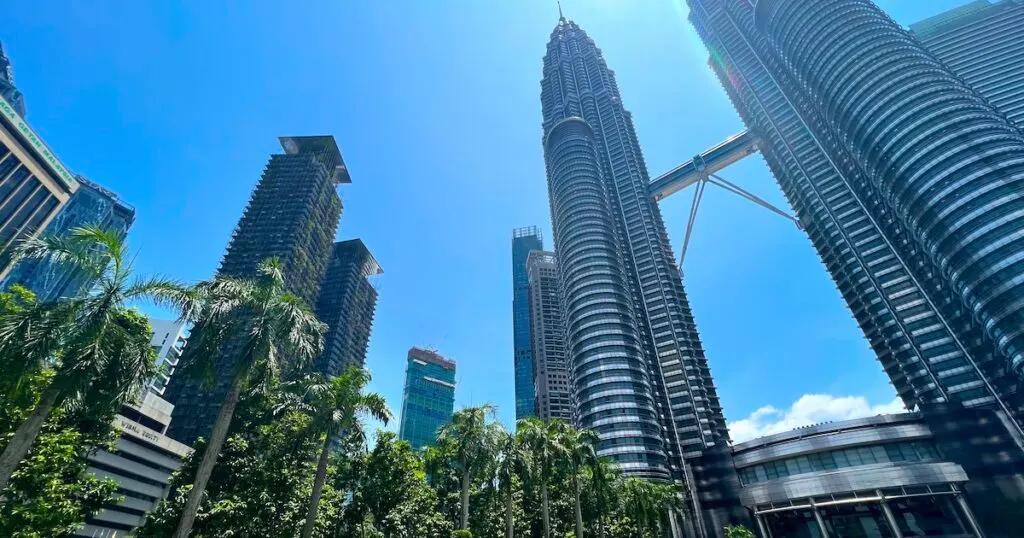
Between 1998 and 2004, they were the tallest buildings in the world.
Today, they still hold the title for having the world’s highest two-story bridge: the Skybridge between the 41st and 42nd floors.
With a Petronas Towers entry ticket, you can visit the 200-foot-high Skybridge and the Observation Deck on Level 86.
If you don’t want to go into the towers, the best views are from the landscaped gardens at the entrance to the Suria KLCC mall.

The Suria KLCC mall has a range of luxury shops, names like Zara and UNIQLO, and a large supermarket.
It’s worth taking a short walk through the air-conditioned mall to KLCC Park, where there are beautiful water fountains framed by skyscrapers.
At night, the park hosts the Symphony Lake Water Show at 7.30 pm (or 7pm on Saturdays). It’s not spectacular, but for some light evening entertainment, I’d say it’s worthwhile.

Instead of eating at the mall, I suggest that you break for lunch at the nearby Restoran Nasi Kandar Pelita.
The Nasi Kandar chain restaurant is popular with locals. Try their mango lassi, thosai and biryani – my favourites. You can order directly from the menu or use the buffet.
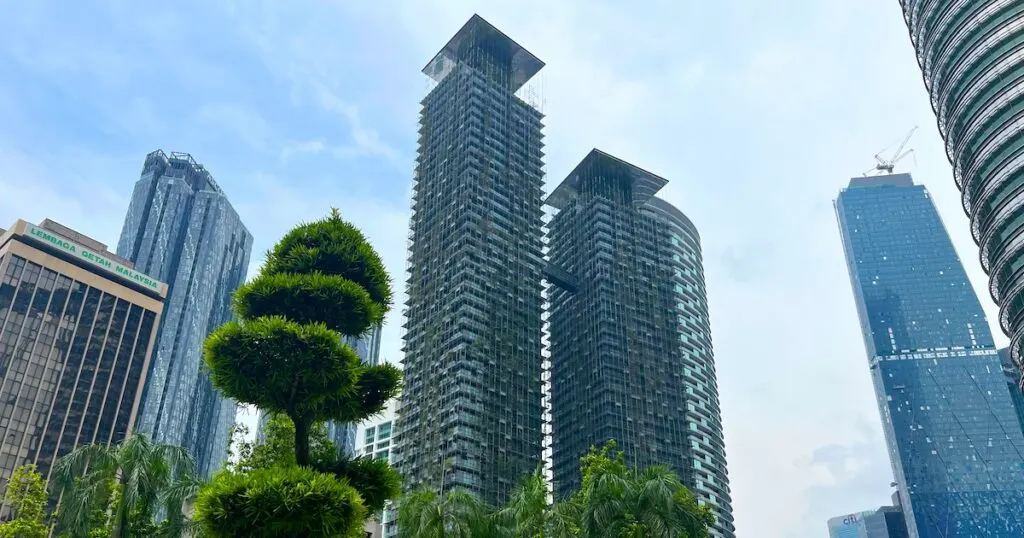
You’ll pass by this beautiful skyscraper on the way.
2. Explore the Batu Caves
The Batu Caves are one of the most famous things to do in Kuala Lumpur and a must on any three-day Kuala Lumpur itinerary.
You can take a Grab taxi there or take the MRT to Gombak Station.
There aren’t many information plaques, so if you’re going to visit on your own, you probably want to read a little about the history before you visit.
Alternatively, you can take a guided half-day Batu Caves tour and have a guide explain it to you.

Located in the Batu Caves suburb of the city, the site has a 325-metre statue of the Hindu God Lord Murugan, a deity of war and victory.
There is also a steep set of rainbow-coloured stairs leading up to the limestone caves. The caves are believed to be 400 million years old.
At the top of the 272 steps, you’ll find the complex’s main temple, Cathedral Cave (or Temple Cave), built in 1920.
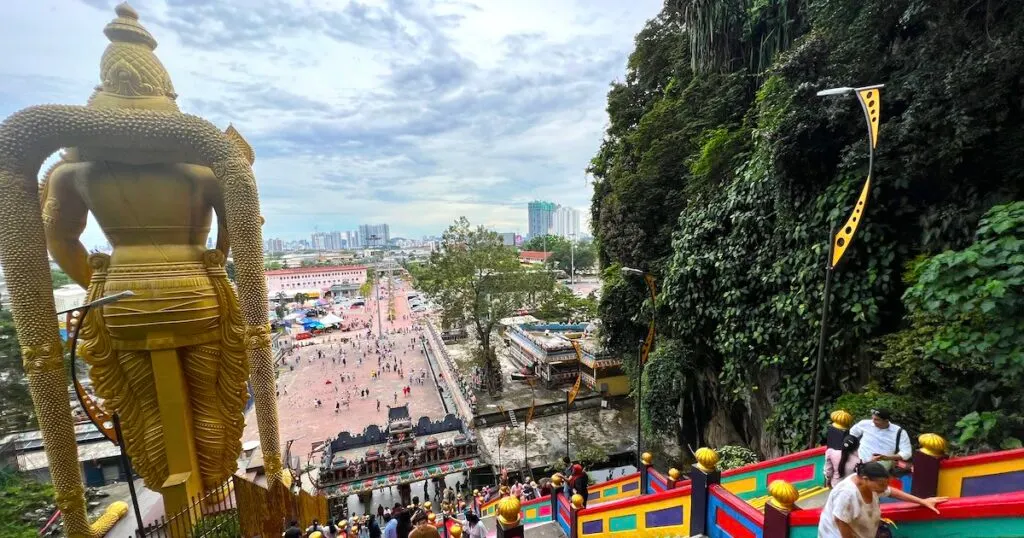
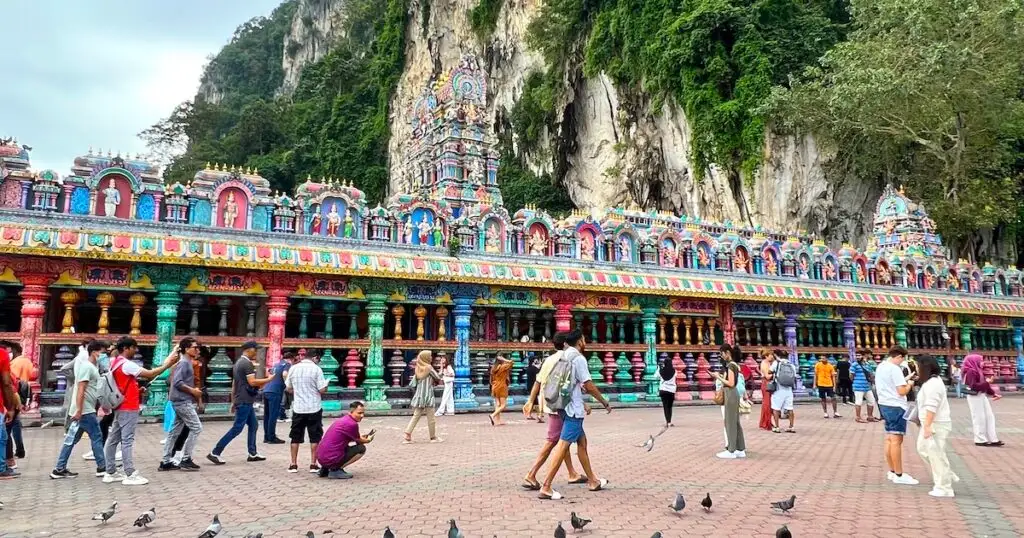
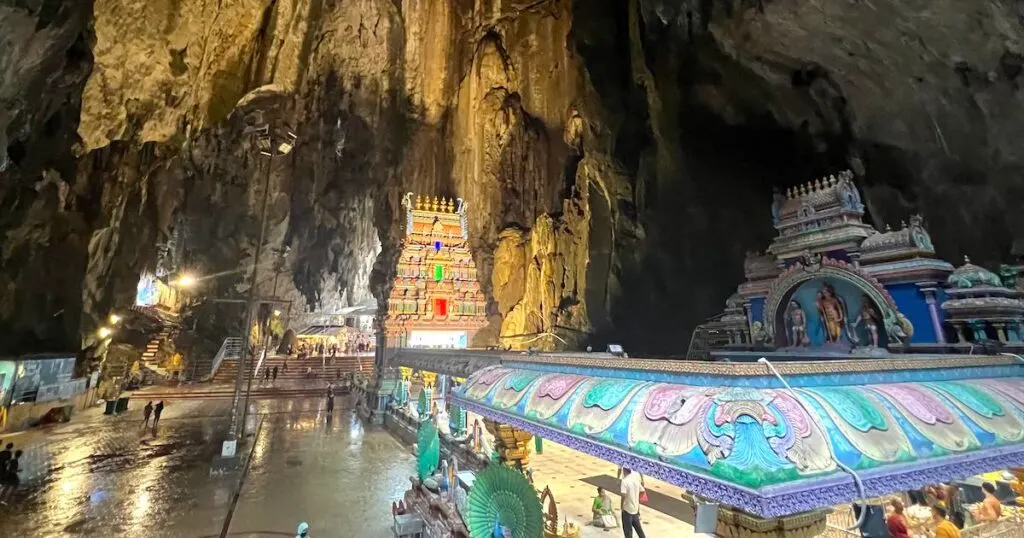
I’ve been to many cave temples in Malaysia, but this is one of the most impressive.
The high, vaulted ceiling has several Hindu shrines. Most of them are dedicated to Lord Murugan.
I also visited the Ramayana Cave, which is on the left-hand side of the complex and marked by a 15-metre-tall green statue of Hanuman.
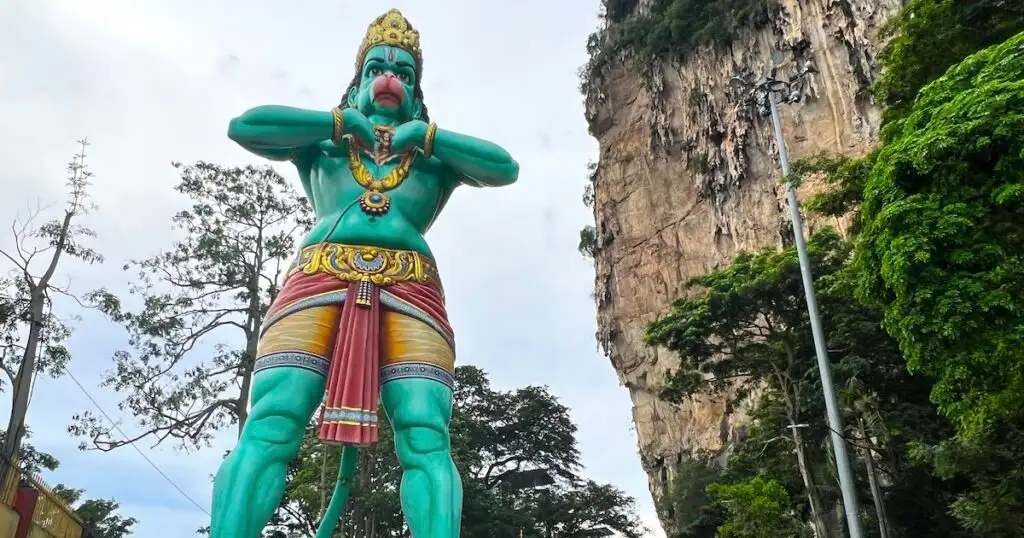
This is my favourite temple because the cave is filled with psychedelic depictions of the Ramayana, the famous Indian epic.
3. Eat wat tan hor at Pan Heong Restaurant in Batu Caves
You know those foods that you eat once on a trip, and you can’t stop thinking about?
For me, it’s the wat tan hor at Pan Heong Restaurant, a must-visit on your Kuala Lumpur itinerary.
Located a 20-minute walk or 10-minute drive from the Batu Caves temples, this family restaurant has been open since the 1960s.
Its most famous dish is the seafood wat tan hor, a Chinese-Malaysian dish with flat rice noodles, a thick eggy gravy and prawns.
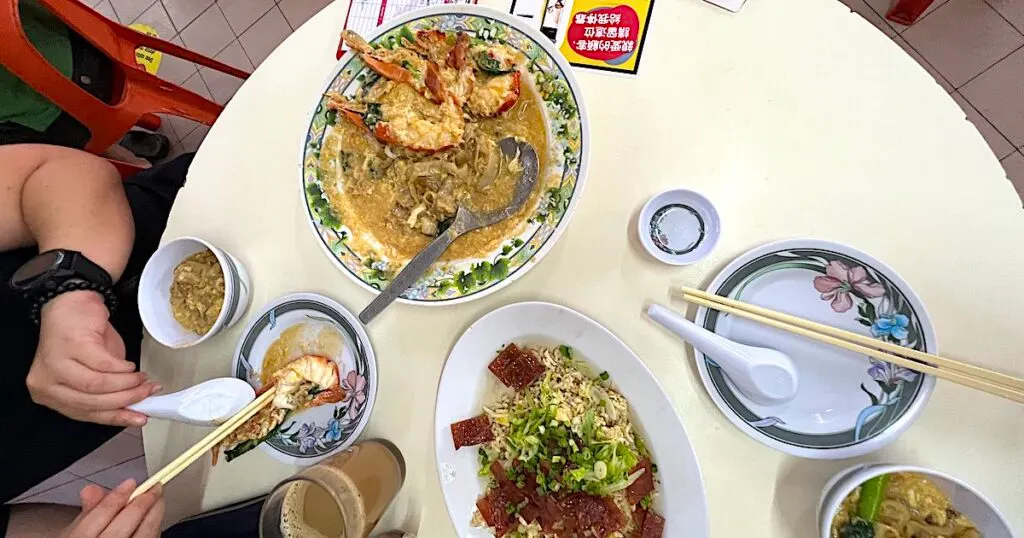
It’s not spicy, but rich and savoury, and mouth-wateringly good. I have tried wat tan hor at several places in Malaysia, including KL and Sabah, but none have been as good.
The restaurant is quite famous, so if you visit at peak times, you may need to wait 10-20 minutes for a table.
A robot will bring your drinks to you. It’s quite at odds with the decor, which is simple and traditional, with open-ended walls and ceiling fans.
The walls are plastered with photographs and newspaper clippings about the restaurant’s history.
4. Visit Thean Hou Temple
My favourite temple in Kuala Lumpur is Thean Hou Temple, a six-tiered temple draped in traditional Chinese lanterns.
It overlooks the city from the top of Robson Heights.
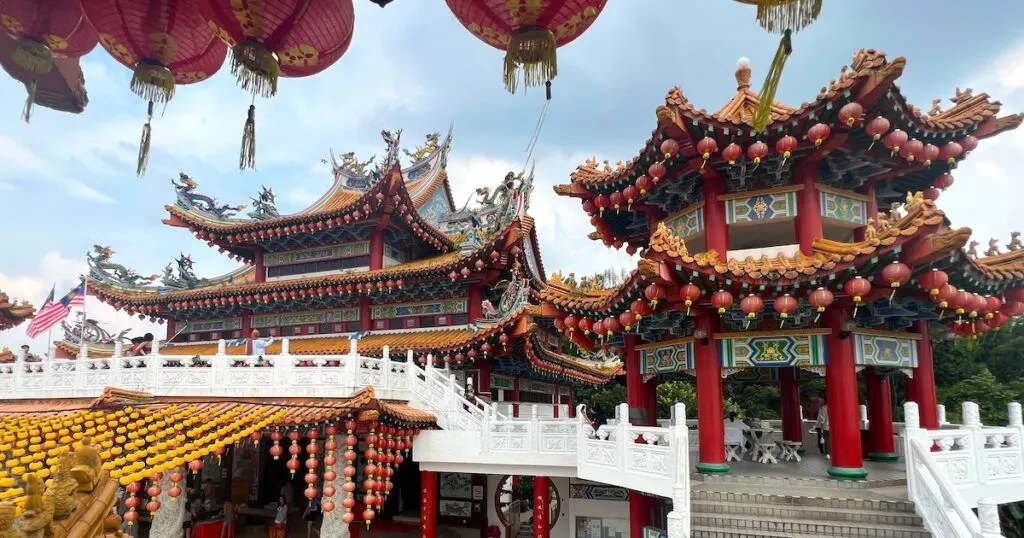
Dedicated to the Chinese sea goddess Mazu, the temple was built in 1987 by Haianese residents.
The interiors are very intricate. There are statues of deities (Guan Yin, Tiann Hou Niang Niang, and Shui Wei Sheng Niang) in the prayer hall.
The temple also has a tortoise pond and garden with Chinese herbs.
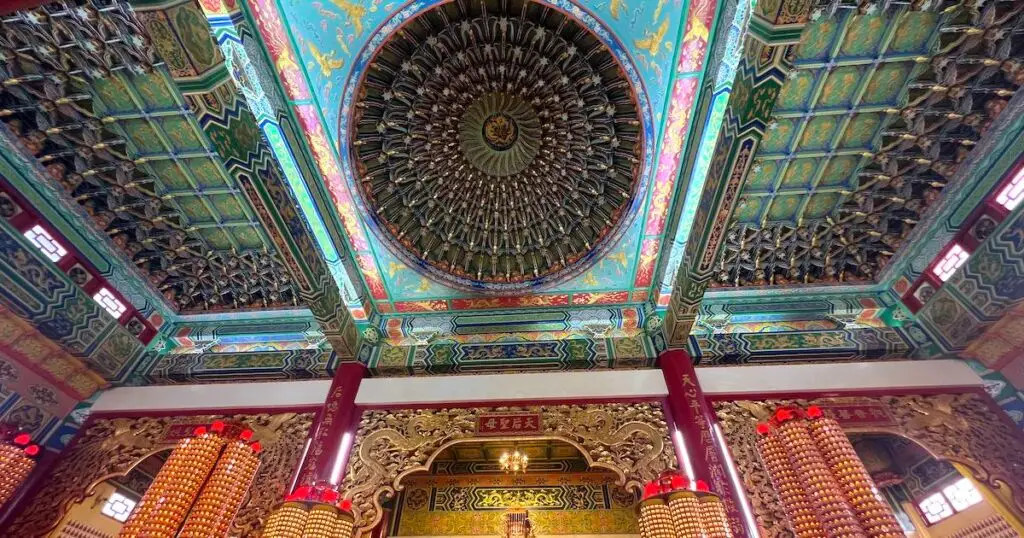
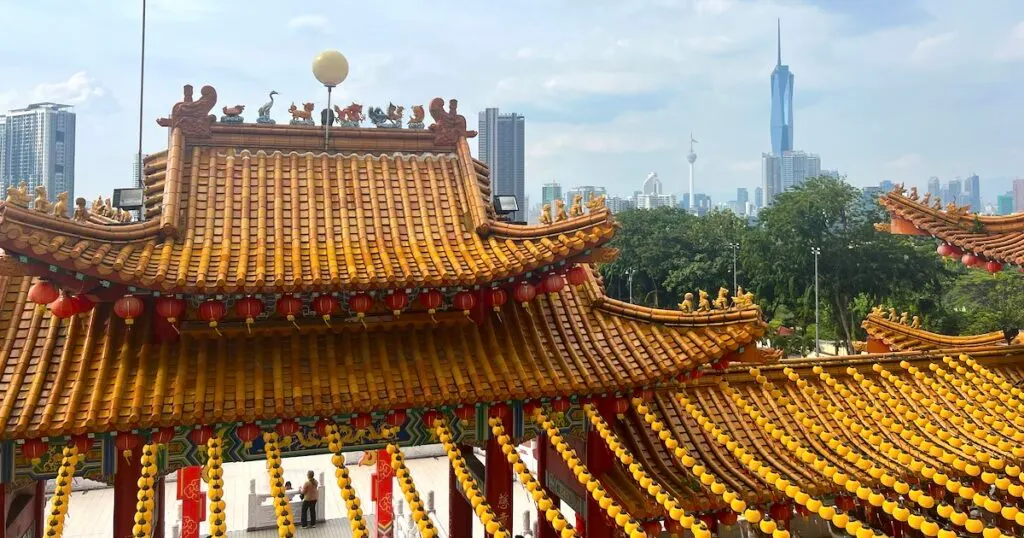
I visited the temple in the daytime, but if you can, visit in the evening to see the lanterns light up.
You only need an hour or so to visit the temple grounds.
5. Explore the Genting Highlands and Chin Swee Caves Temple
From Kuala Lumpur, it’s an hour’s drive to the Genting Highlands, a beautiful highland area carpeted in dense forests.
At the end of the winding mountain road is Resorts World Genting, the only casino resort in Malaysia. It has a theme park, a shopping mall and casino.
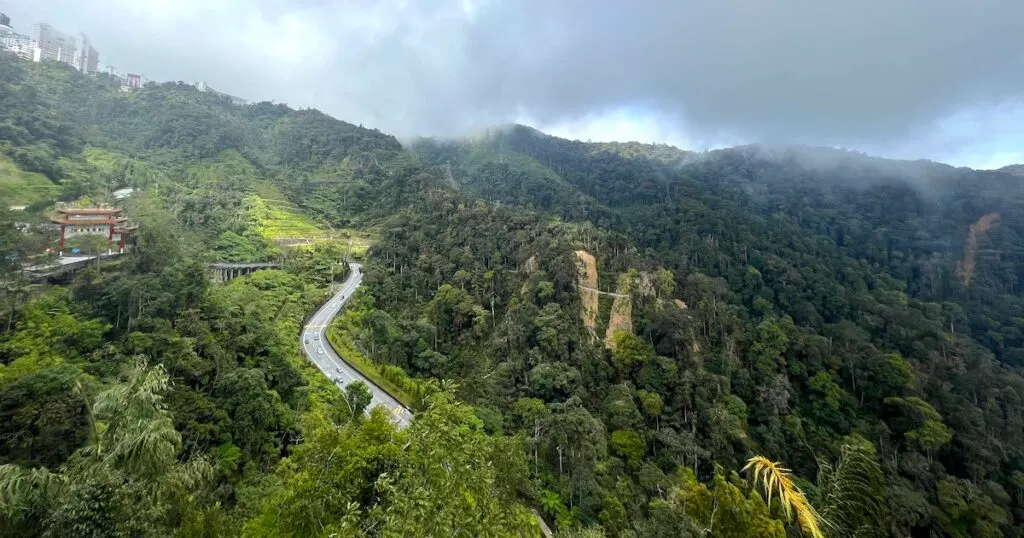
I visited Resorts World on the weekend, when it was quite busy. In the mall, there is a set of virtual-reality rides that I really enjoyed trying. However, the main theme park was closed due to bad weather conditions.
For me, the real highlight is Chin Swee Caves Temple, 10 minutes’ drive from the top of the resort, which I have now visited twice.
Located 4,600 feet above sea level, the 28-acre Buddhist temple complex has sweeping views over the mountains.
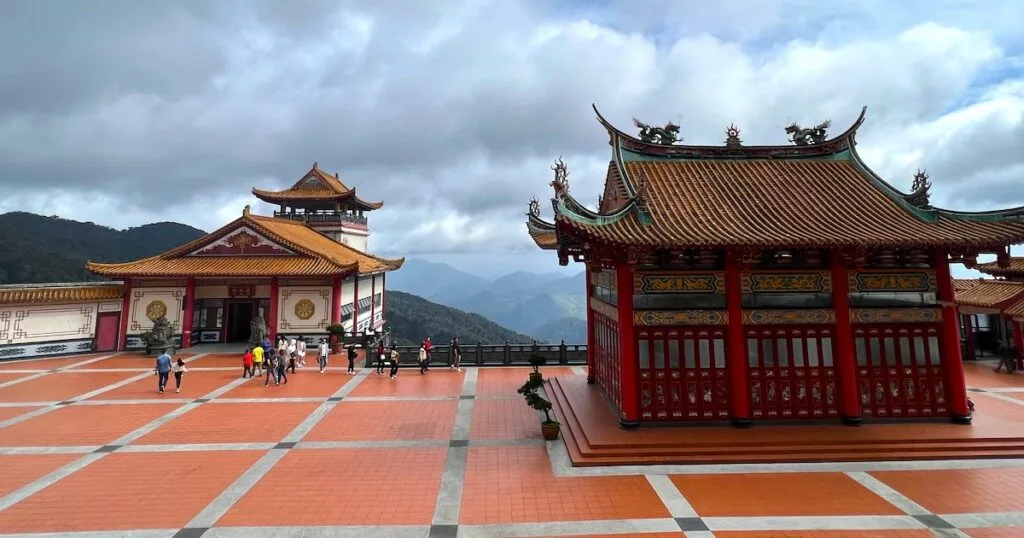
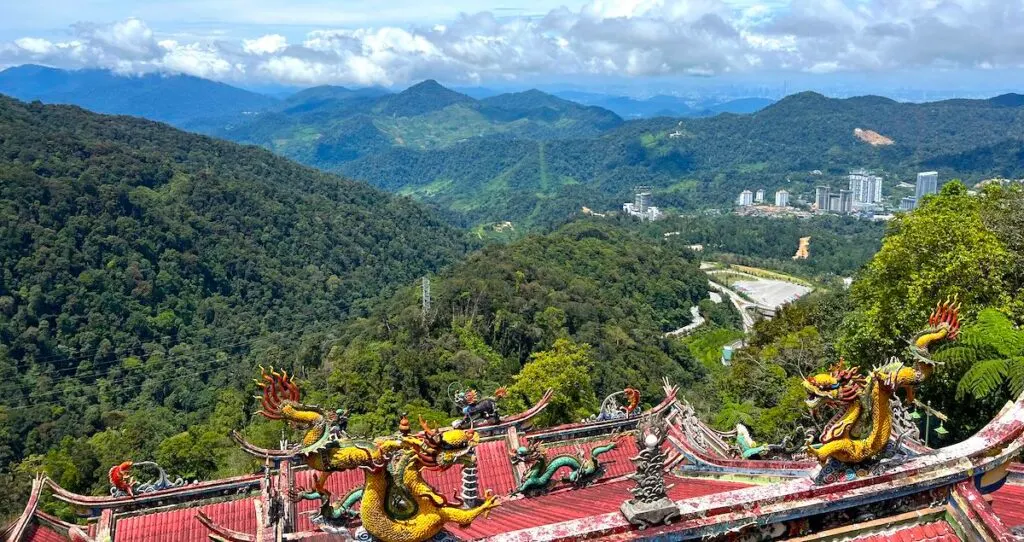
Chin Swee Caves Temple is one of my favourite temples because it has a long series of entertaining and informative displays depicting the 10 Chambers of Hell.
The small, life-like models act out the (gory) forms of punishment for actions that produce bad karma, from lying and cheating to murder.
It’s quite fascinating, especially how some deeds are ranked far worse than others (and at odds with the Western justice system).
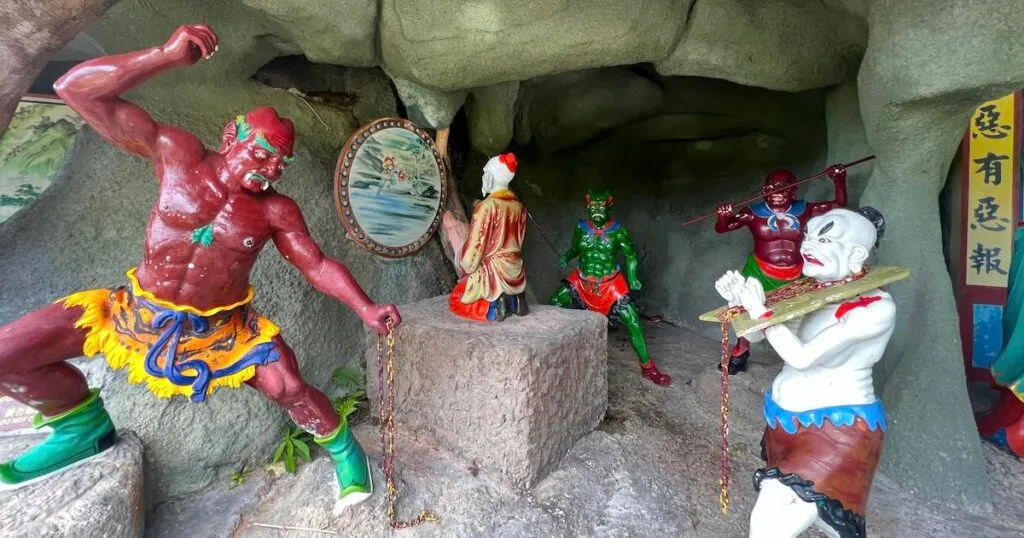
The temple also has a large stone Buddha and a nine-level pagoda.
I paid to enter the pagoda, which has 10,000 blessing lamps and great views over the highlands.
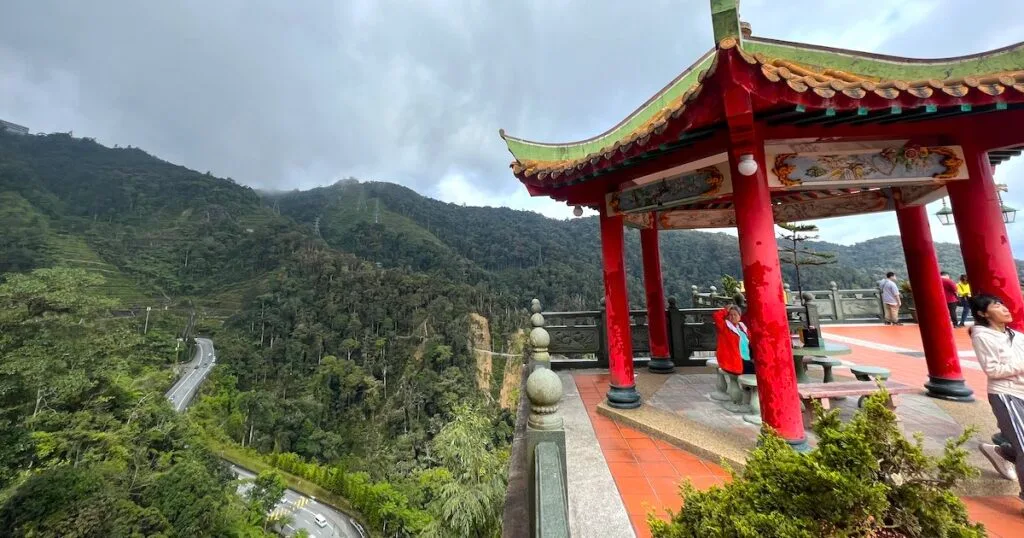
On the drive back to KL, we stopped at Gohtong Jaya to eat some durian.
There are several stalls that sell the durian fruit, which is famously more delicious in the highlands.
Durian season in Genting is from late May to August. There’s also an annual Durian Festival in Genting every June.

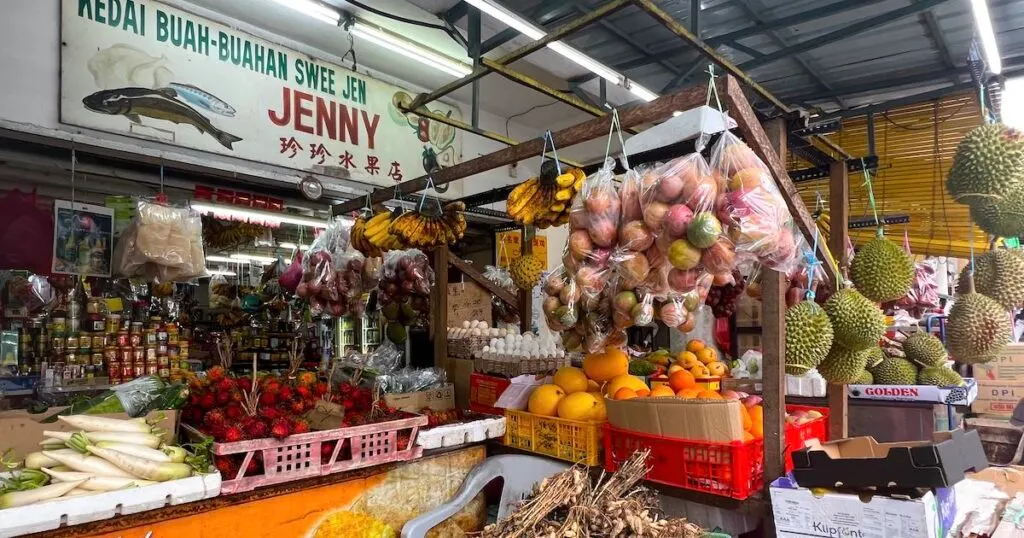
Now, for the practicals: to add these places to your Kuala Lumpur itinerary, you need your own vehicle (or someone willing to drive you).
You can pick up a car rental in the city by checking the availability on Discover Cars.
We hired a car for one day and it was well worth it, considering that we visited the temple, town and Genting mall and casino.
6. Hike the seven-tiered Kanching Falls
Kanching Falls is one of the most underrated places to visit on your Kuala Lumpur itinerary.
It does feature on one combined tour of the Batu Caves, Kanching Falls and Ramayana Caves. However, it’s still not very well-known.
The seven-tiered waterfall is located between Kuala Lumpur and Rawang. I succeeded in booking a Grab car there and back.
We were the only international tourists at the waterfalls. Many local families were enjoying the bottom falls, but the higher we climbed, the fewer people we saw.
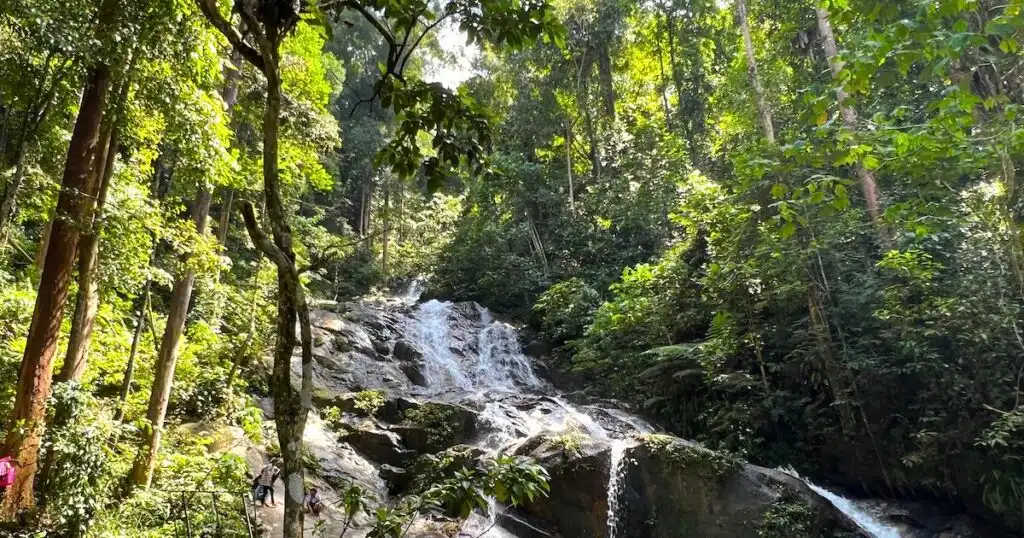
The lower three waterfalls were the busiest: young children splashed and screamed in the main swimming pools on the second and third levels.
Monkeys also swung through the trees, biding their time until they could steal bananas and rice from the families’ picnics.
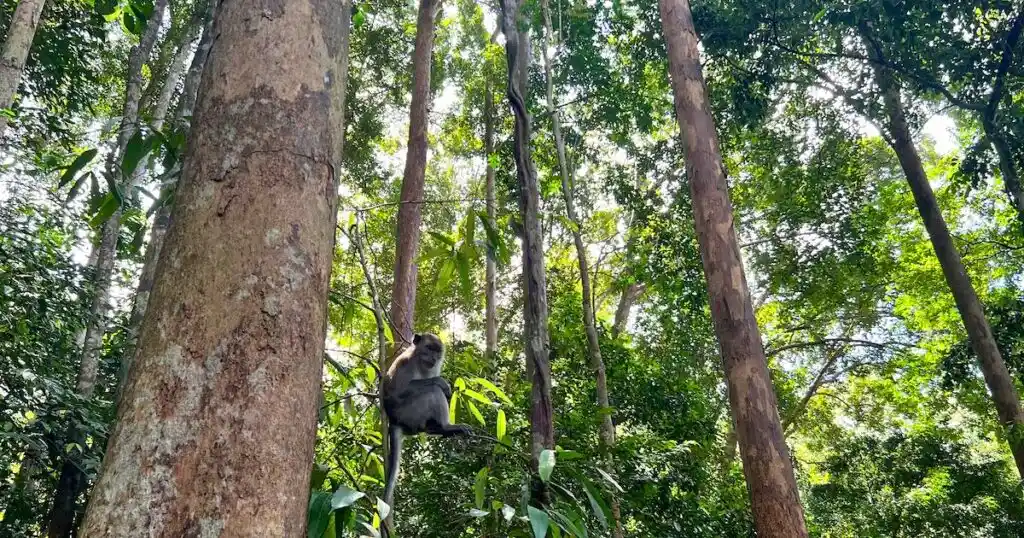
Level 4 is a nice contrast: there’s a decent pool and fewer people. It’s also a nice spot to take photographs.
Level 5, Lata Tembusu, was my favourite. Over a small bridge is a deep, sandy pool. Being careful not to get too close to the edge, I got into the pool and gazed out over the forest.
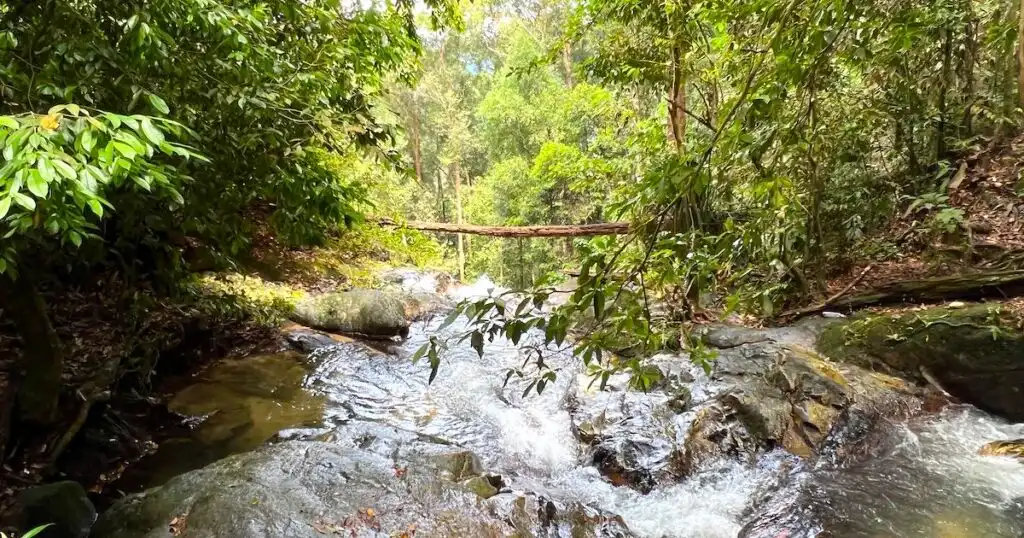
The hike itself is challenging but doable for the first four or five waterfalls (around 30 – 40 minutes’ hike).
However, after waterfall five, the path increases in difficulty: it’s far steeper. I didn’t bother climbing to the very top because the trail was so muddy that I was slipping and sliding everywhere.
7. Get stuck into the city’s coffee and food scene
If you’re a foodie, you’re in the right place. Kuala Lumpur has a mouthwatering blend of Chinese, Malay and Indian cuisine.
These are some must-try dishes…
Malay cuisine:
- Nasi lemak: The national dish, consisting of coconut rice, anchovies, peanuts, egg, and cucumber. It’s eaten for breakfast, lunch and dinner.
- Beef rendang: Beef with coconut milk, lemongrass, galangal and other delicious spices, paired with rice.
- Cendol: A famous dessert with shaved ice, coconut milk, palm sugar and jelly.
Chinese cuisine:
- Hainanese chicken rice: Marinated chicken with oily rice, served at kopitiams (Chinese coffee shops) and many restaurants.
- Char kway teow: Hailing from Penang, this stir-fried noodle dish features flat rice noodles, egg, shrimp, bean sprouts and soy sauce.
- Char siu: Glazed barbecued pork served with rice noodles.
- Wat tan hor: Cantonese-style flat rice noodles with a thick egg gravy, usually made with shrimp or other seafood.
Indian cuisine:
- Thosai (dosa): Popular for breakfast, this is a thin, crispy pancake made from rice and lentils and paired with sambal. There are many variations.
- Tandoori chicken: Mouthwatering chicken marinated in yoghurt and spices. My favourite tandoori chicken in Kuala Lumpur is from Tandoori Hut.
- Biryani: Slow-cooked, spicy rice with chicken, lamb or beef.
- Roti canai: A flatbread paired with dhal (lentil curry).
- Teh tarik: Considered Malaysia’s national drink, this hot milk tea beverage is served iced or hot.
Nonya and Mamak Cuisine
You also must know about Nonya cuisine, a blend of Chinese and Malay influences
Another distinct cuisine in Kuala Lumpur is mamak cuisine. Mamak stalls are run by Indian Muslims.
This community, originating from Tamil Nadu in India, brought lots of dishes to Malaysia when they migrated over during the British colonial rule.
Let’s get stuck into some of my favourite places to eat in the city…
Capitol Cafe, Bukit Bintang
My favourite place for nasi lemak is Capitol Cafe in Bukit Bintang.
Kept cool by ceiling fans, the restaurant is tucked down a side street.
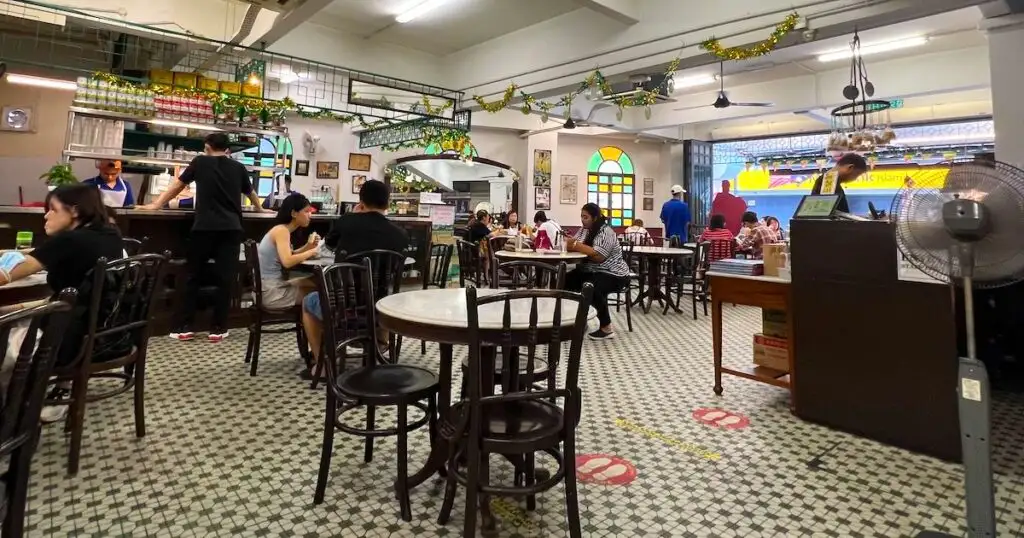
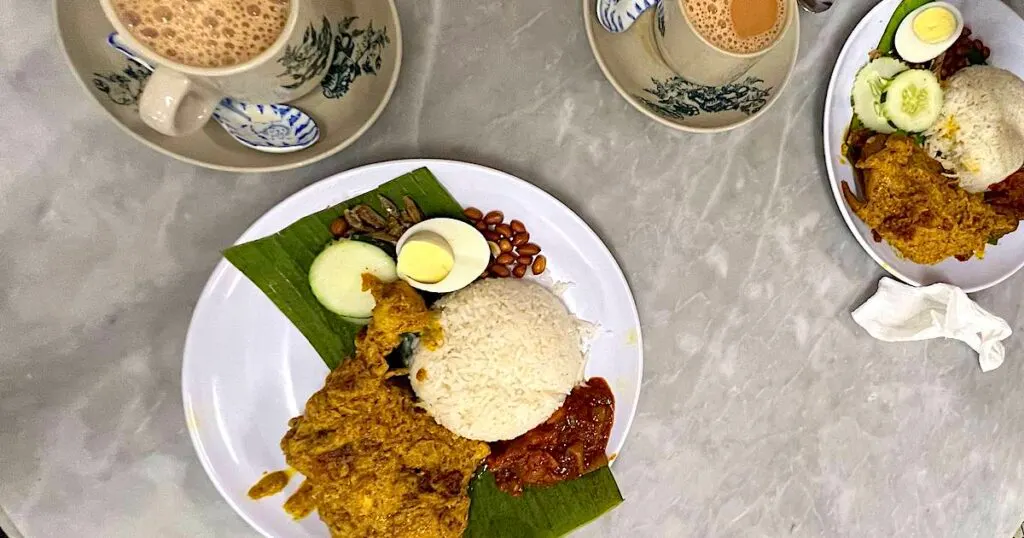
Many people argue it has the best nasi lemak in the city – I can certainly vouch that it’s delicious and includes a huge portion of chicken.
Chow Kit
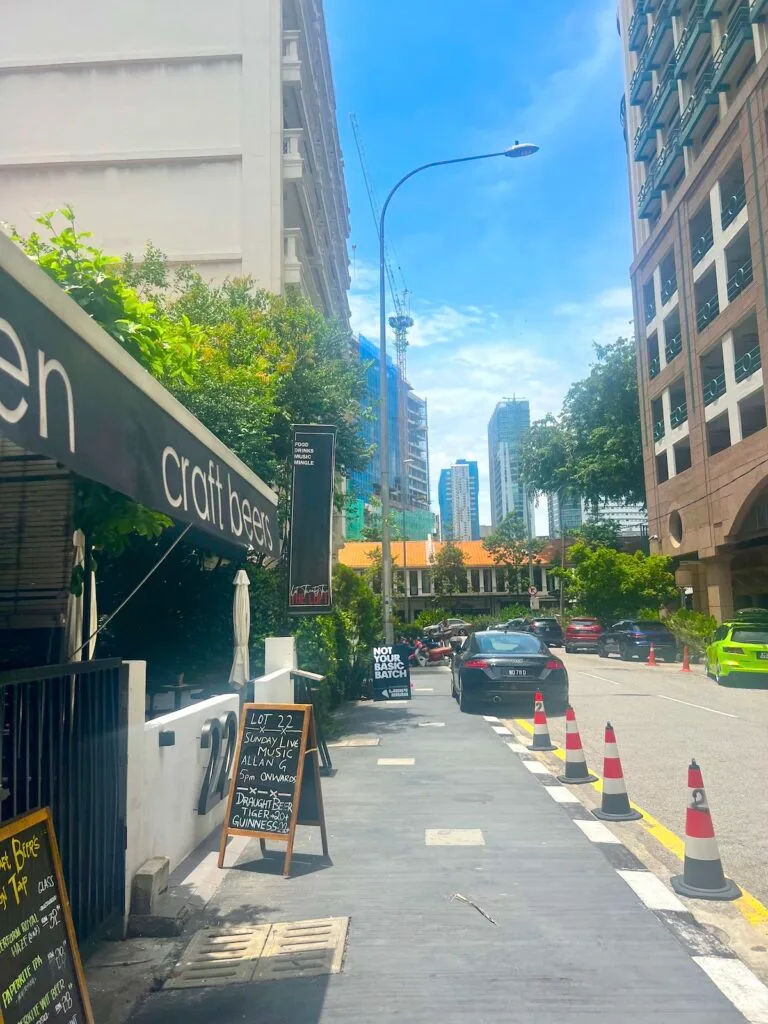
Chow Kit is an underrated area of the city. It has several places worthy of mentioning:
Limapulo: Baba Can Cook is well-known for nonya cuisine. It also runs a cookery school.
I love the bar JOLOKO for cocktails and good vibes.
Friends rave about the coffee at Common Grind too.
Nasi Kandar
Nasi Kandar are a series of chain restaurants in Kuala Lumpur with authentic Malay and Indian cuisine. I have lost count of how many times I’ve eaten at Nasi Kandar Pelita, near the Petronas Towers.
Hilariously, after a night out at the W Hotel with friends who grew up in KL, they said, “We’ll take you to a good spot.”

That good spot turned out to be Nasi Kandar Pelita, where I had been getting lunch almost every day for the past two weeks, so consider it approved.
Sentul Depot, Sentul West
My local friends also took me to Sentul Depot, an up-and-coming spot built on an old railway yard.
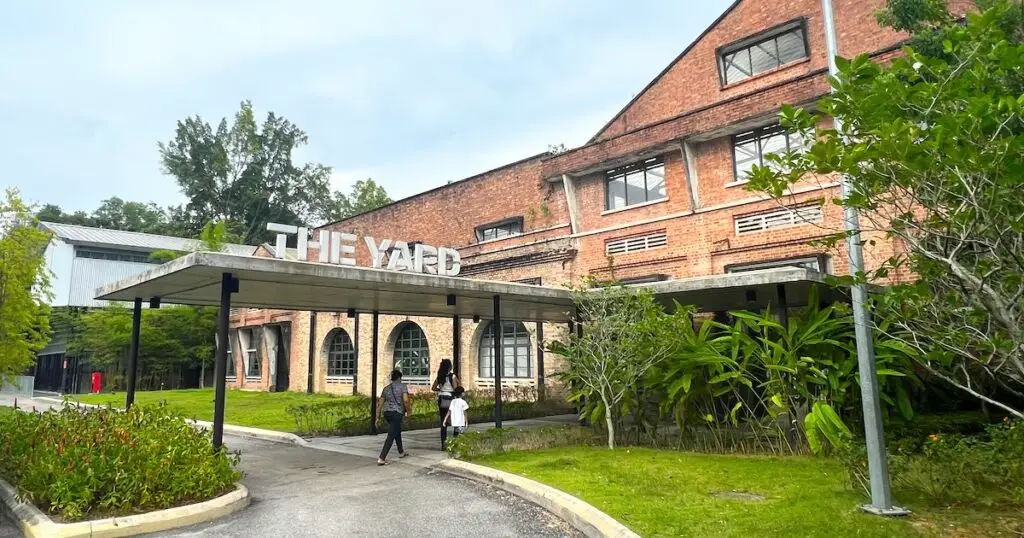

The venue has a variety of stalls serving mainly Chinese and Malay Cuisine, as well as coffee and fusion dishes.
Bröom Artisan Bakery & Kitchen, Petaling Jaya
Bröom Artisan Bakery & Kitchen is another spot that my friends introduced me to. It is located in Petaling Jaya, on a street that’s popular for vintage shopping.
There are several vintage shops along the street where you can try your luck.

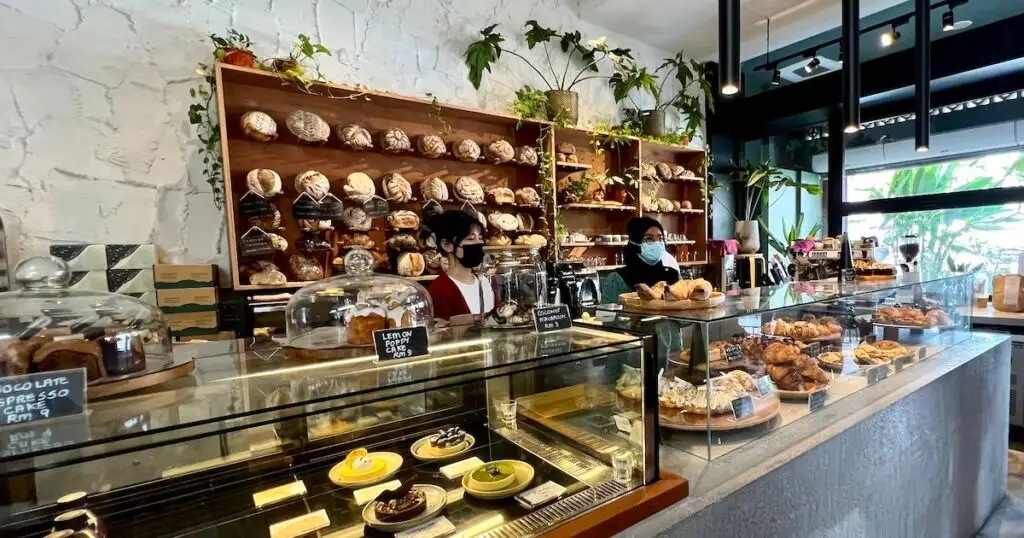
The pastries looked to die for – sadly, I’m gluten intolerant, so I couldn’t test them out myself. We headed here for a fusion brunch with Western and Malay influences.
Bamboo Hills, Sentul
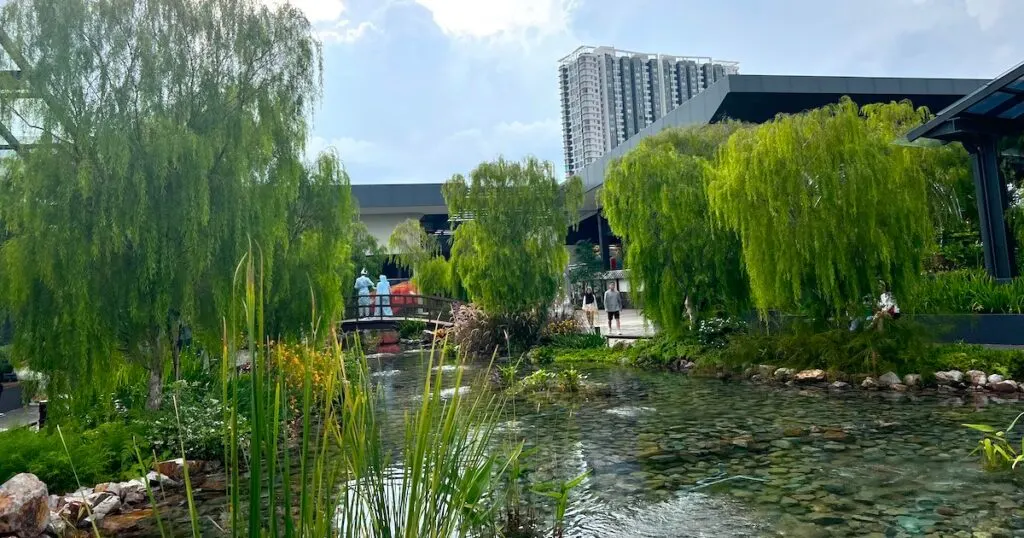
Bamboo Hills is a popular spot that I found myself invited to for dinner and catch-up drinks on several different occasions.
It’s in Sentul, so a little far from the city centre, but a nice spot where many people take photos alongside the pond.
TAP ROOM is a great place to grab drinks.
Restoran Meng Kee Char Siew, Sunway area
For char siew (glazed barbecue pork), my friend took me to his favourite spot: Restoran Meng Kee Char Siew.
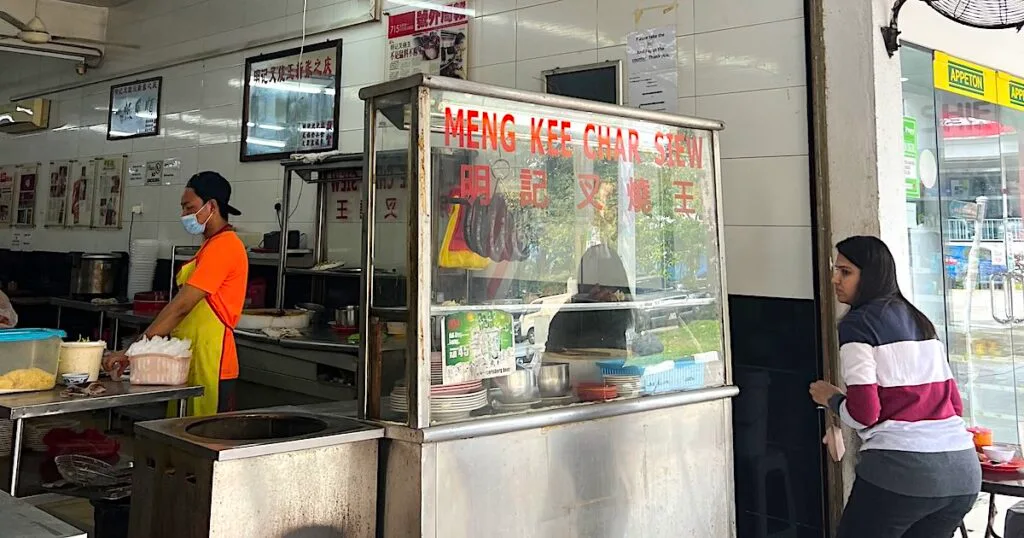
This restaurant is located past Petaling Jaya, near the Sunway Lagoon, so it’s a little far to go.
I’m not a fan of pork dishes usually, but I occasionally get an intense craving for the char siew from this spot. So, it comes highly recommended.
Jalan Alor
For quick, easy street food near the city centre, Jalan Alor should be your go-to.
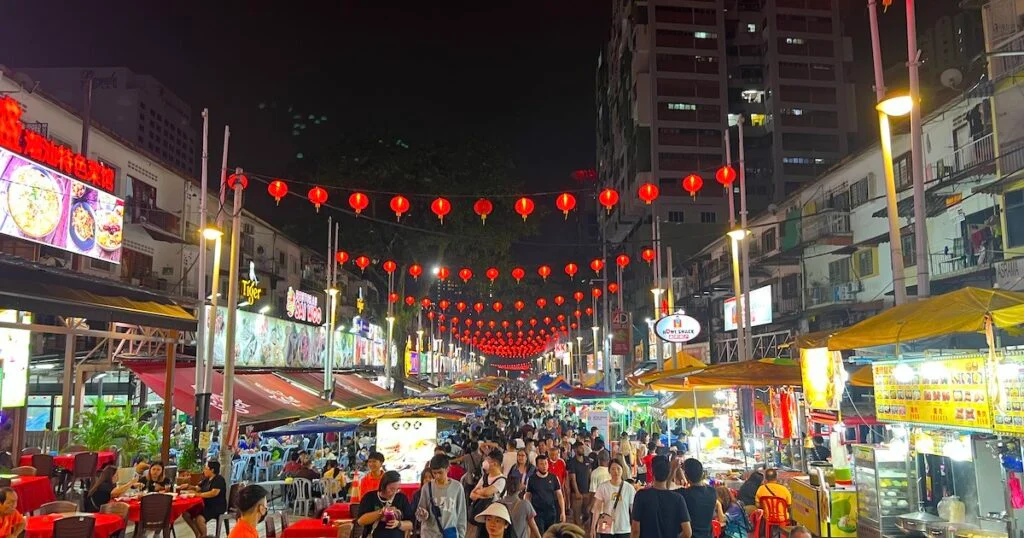
This busy street is packed with street food stalls and restaurants serving everything from lobster and fried rice to cendol.
You can also try tropical fruits like durian and mangosteen – just don’t take them back to your hotel, as they are typically banned.
If you don’t want to navigate street food alone, just check the availability for a street food tour – with 15+ tastings.
8. Explore Petaling Street and Central Market
Another must-see spot for your Kuala Lumpur itinerary is Petaling Street Market, located in Chinatown. You can take a Grab there or the LRT to Pasar Seni station.
This is the perfect place to practise your haggling skills – it’s expected and encouraged, culturally – for items like clothes, sunglasses, bags, souvenirs and Chinese medicines.
I love going to Petaling Street to browse and soak in the atmosphere. However, if I’m being honest, my main motivation is the durian stalls – I’m a huge fan of the stinky, creamy fruit.
The stalls will give you plastic gloves so that you can eat the fruit on the spot.
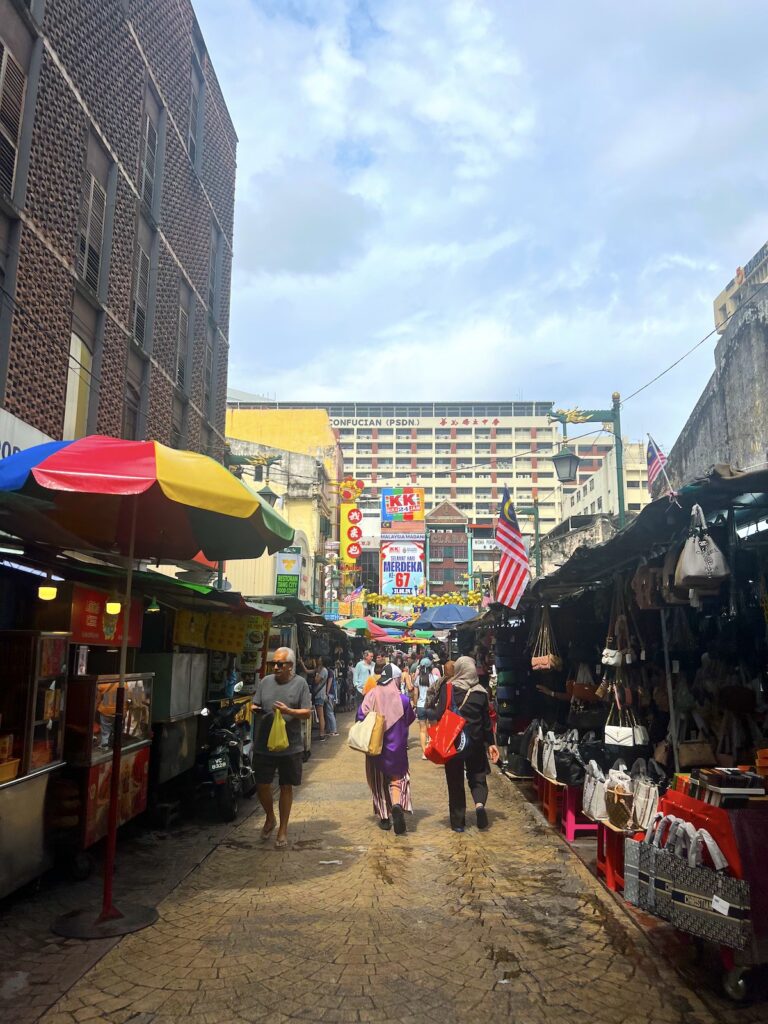

If you find the haggling too much, head to the nearby Central Market, which is an air-conditioned space with more artsy souvenirs and food items.

I picked up some gorgeous postcards from Central Market to send back home.
There are also temples in Petaling: Chan See Shu Yuen Temple, Guan Di Temple and Sri Maha Mariamman Temple, so it’s best to wear modest clothing just in case you want to visit any.
10. Experience the nightlife in Kuala Lumpur
Usually, I’m not much of a party person. However, that all changed when I reached Kuala Lumpur.
The nightlife is irresistible, with the skyscrapers and Petronas Towers lighting up the city at night, and many small, intimate bars offering booths or hiding behind concealed entrances.
The W Hotel
A highlight of my Kuala Lumpur itinerary was attending a DJ event at the W Hotel.
This is a famous hotel chain, and the Kuala Lumpur edition is located right next-door to the Petronas Towers, making the views unbelievable at night.

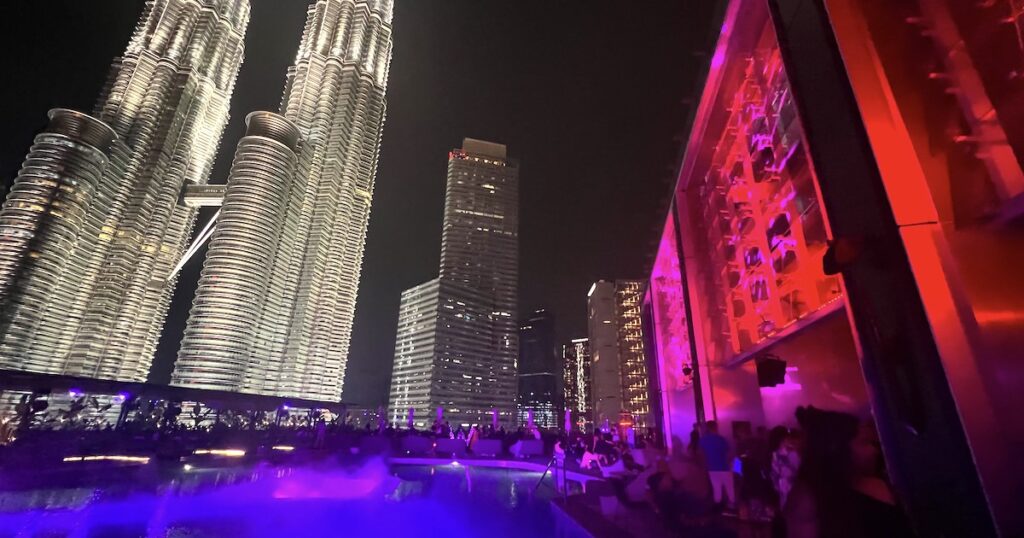
You can check the upcoming W Sessions schedule online to see if there’s anything worth attending.
PS150, Petaling Street
My favourite area for bar-hopping is Petaling Street. The area has an incredible range of bars, from rooftop venues to speakeasy-style venues.
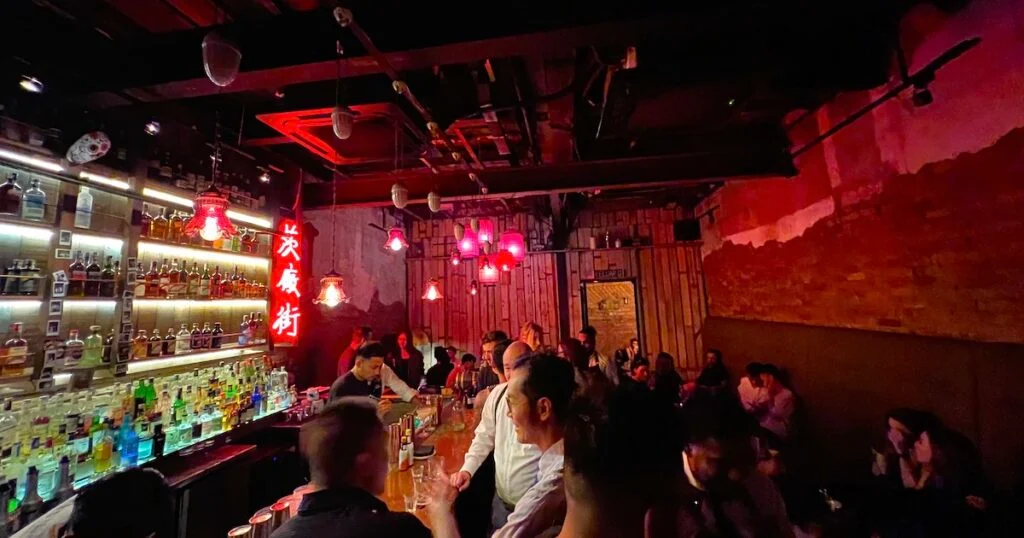
PS150 is set in a pre-war shop, with a small stationery shop on one side and the popular Merchant’s Lane coffee shop above.
Inside, the ‘Opium Den’ has gorgeous booths, and the Main Bar is lit with neon red lights.
Concubine, Petaling Street
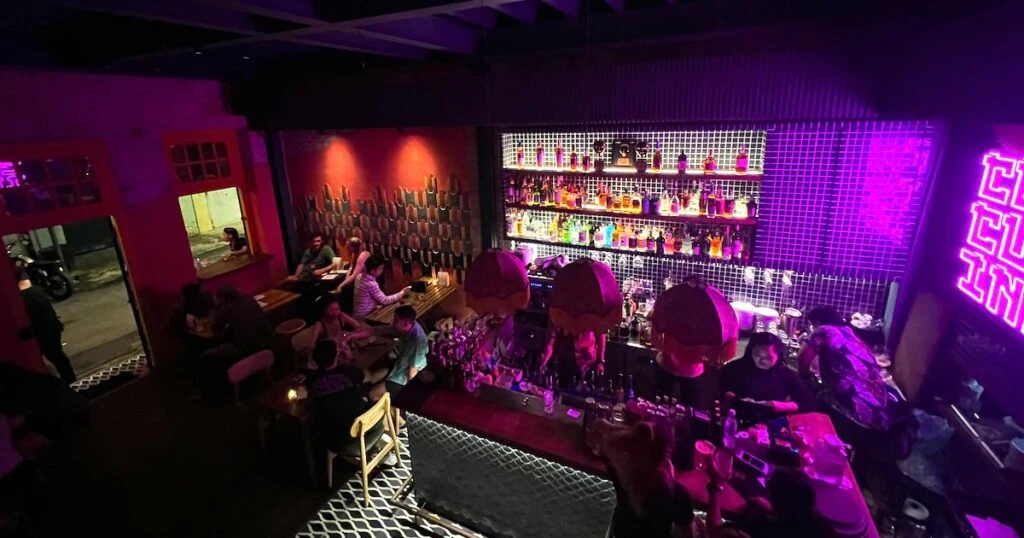
Concubine is another fun bar in Chinatown, lit by red and pink neon lights.
According to the bar’s website, the venue used to host Mahjong nights, reunions for gangs and a range of customers from opium addicts to Chinese merchants.
Pisco Bar, Bukit Bintang
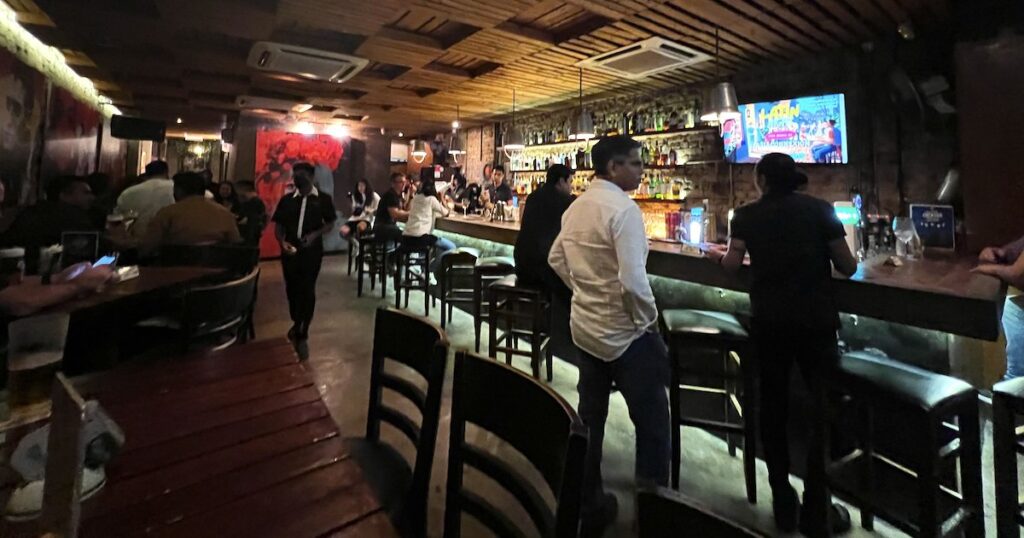
I have spent several nights at Pisco Bar in Bukit Bintang, a known expat hangout. The menu features cocktails and tapas.
Later into the night, on weekends, the upstairs area turns into a small ‘club’ with a dancefloor. It’s good fun – and the people who visit Pisco are usually very friendly.
11. Take a day trip to Taman Negara
As Malaysia’s capital city, Kuala Lumpur is quite well-connected to other tourist destinations in Malaysia.
However, the peninsula is very large, so your day trip options are a little more limited.
However, there are two main places that I think are worth a day trip.
The first is Taman Negara, Malaysia’s oldest rainforest, where you can go hiking, wildlife watching and experience the Canopy Walkway, a netted route strung high in the trees.
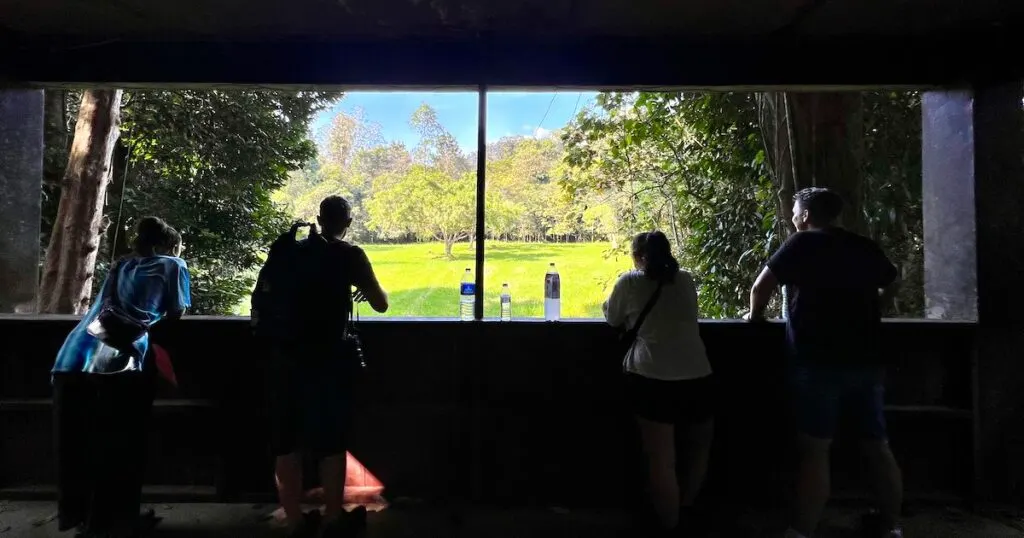
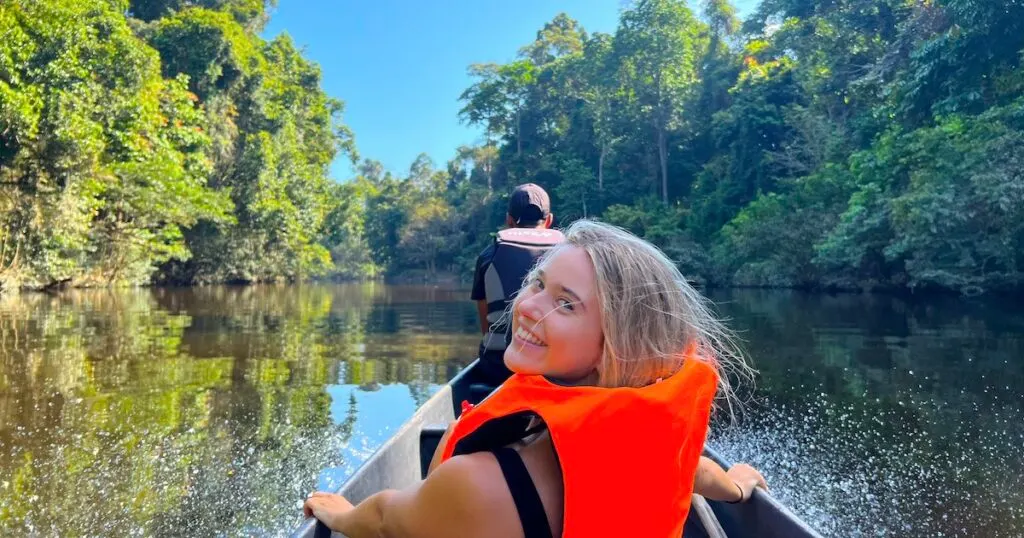
As I explain in my detailed Taman Negara guide, you’re best off spending a couple of nights in Taman Negara to maximise your chances of spotting wildlife and taking a night walk.
On my night walk, I saw scorpions, a handful of hunting spiders and a hairy caterpillar.
My favourite activity in Taman Negara was the Teresek Hill hike, a three-hour walk with incredible views over the rainforest – this features on the Taman Negara hiking tour.
The standard Taman Negara tour visits the Canopy Walkway instead.

Teresek Hill
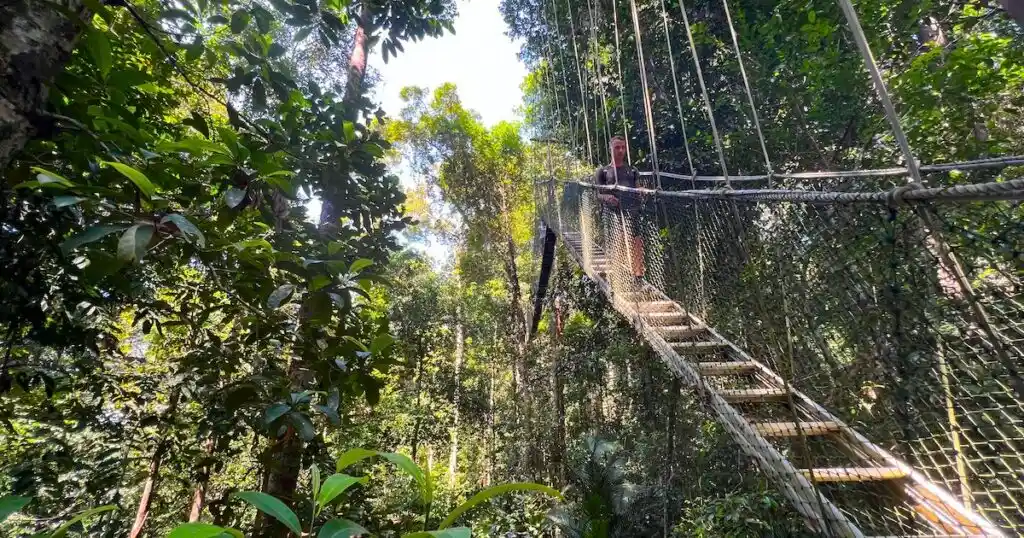
Canopy Walkway
Both tours end at the Orang Asli tribe village, where you can learn about the nomadic Batek indigenous tribe, and see how they make fires, forage food from the jungle and hunt using blowpipes.
It’s a long day out – the journey there takes three to four hours each way – but worth it.
12. Take a day trip to Malacca
The other destination that I think is worthy of a day trip is Malacca, a UNESCO World Heritage Site with colonial architecture and a huge range of historical sites.
These range from a 16th-century Portuguese fortress (one of the oldest colonial buildings in Southeast Asia) to a Dutch church.
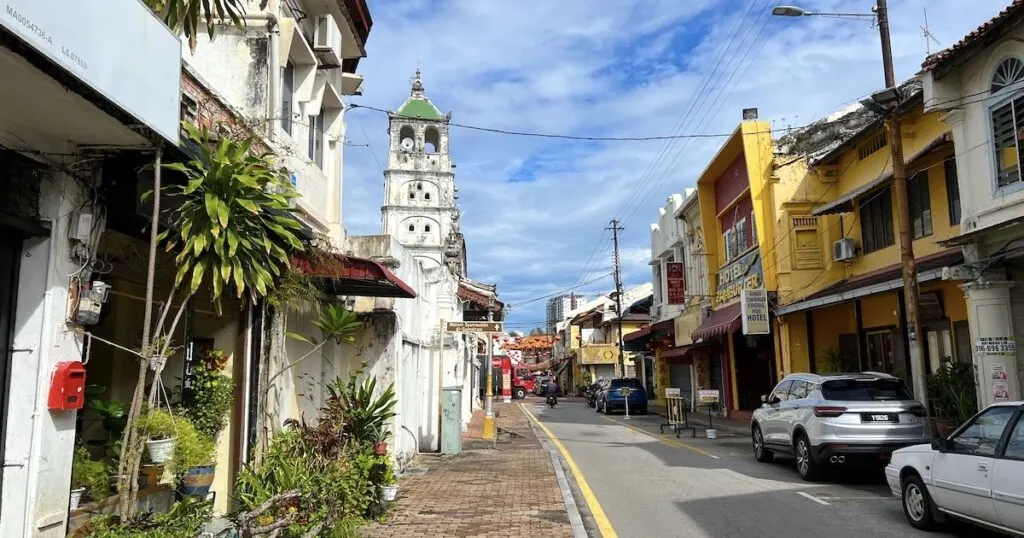
Jonker Street is lined with night markets and streetfood stalls – Malacca is famous for its Perankan cuisine, especially dishes like laksa and cendol.
A typical Malacca day trip visits the main historical sites and museums, often ending with a river cruise or food tour.
13. Spend the day at the WET Deck of the W Hotel
Not many people know that you can spend a day at the WET Deck of the W Hotel without staying there.
Located next to the Petronas Towers, the sunny pool has one of the best views in the city, hands down…
I spent the whole day there with my friend, and I must recommend it for your Kuala Lumpur itinerary.
We only shared the pool with a few other people because most of the hotel guests are out exploring during the day. It was well worth the 50 MYR per adult.
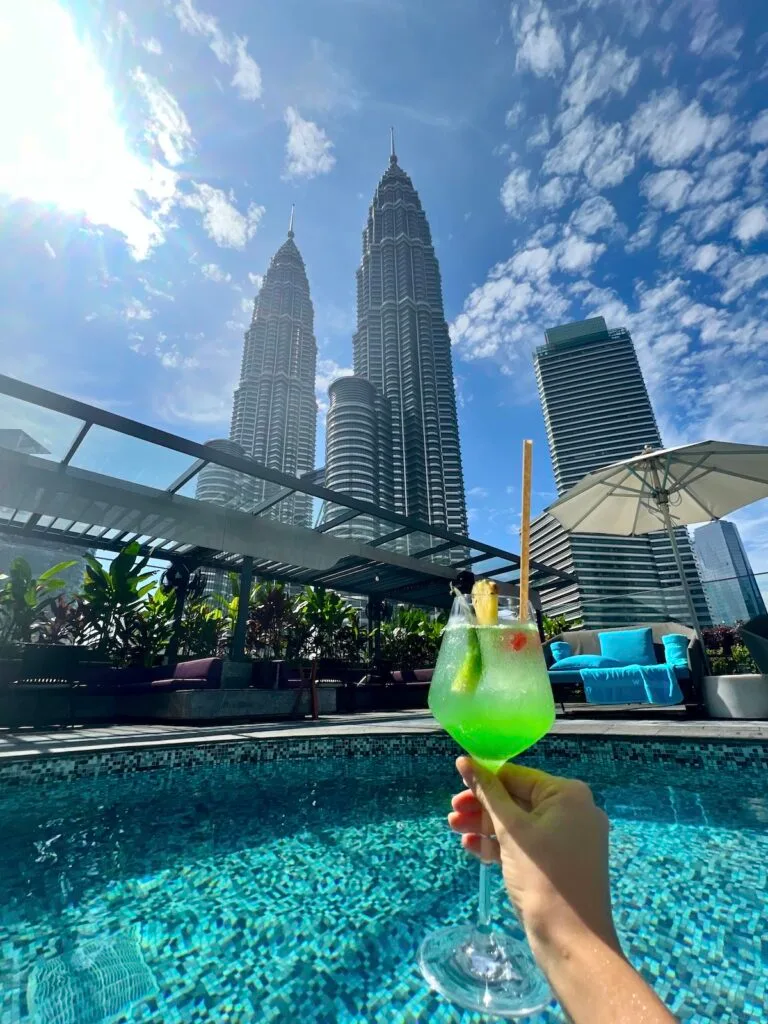
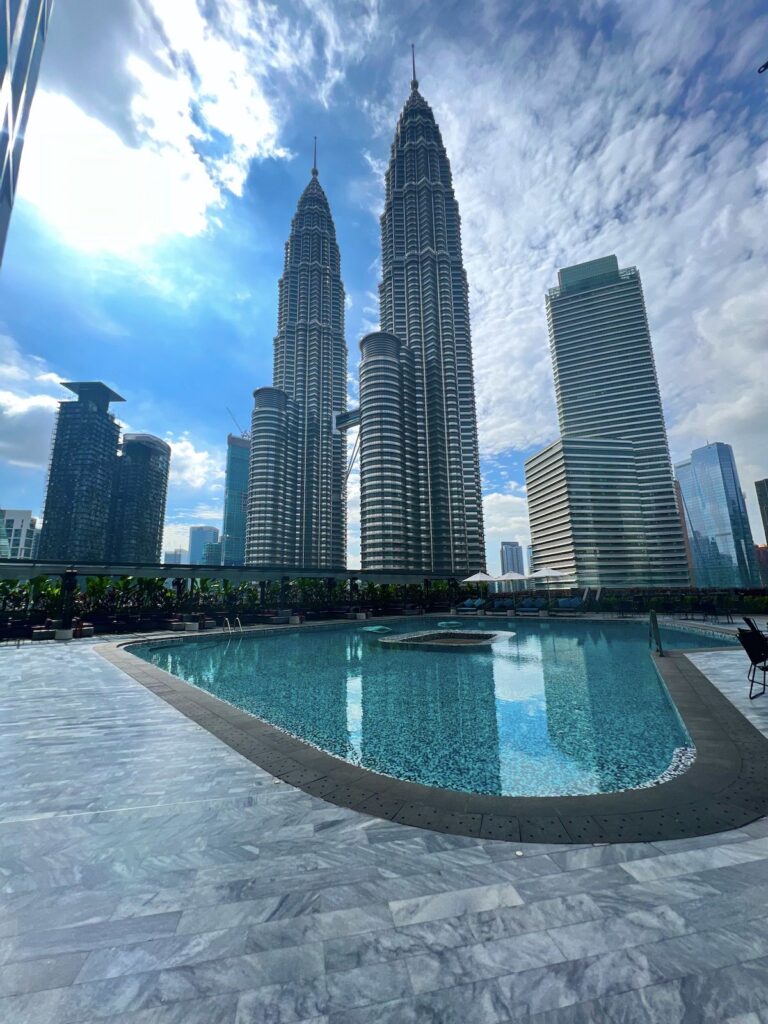
The WET Deck sessions can be booked online, and are available from 10am to 7pm. It costs MYR 25 per child.
There is a poolside bar where we ordered cocktails and delicious Western food – the chips (fries) are to die for!
13. Take in the night views from Ampang
If you have a vehicle – or a taxi that’s willing to wait – you can travel to one of the best night viewpoints in the city: the Ampang viewpoint.
Naturally, this is a popular date night in the city, so expect to find the roads filled with parked cars and couples gazing out over the view.
The Petronas Towers, the KL Tower and other landmark skyscrapers are visible over a blanket of greenery.
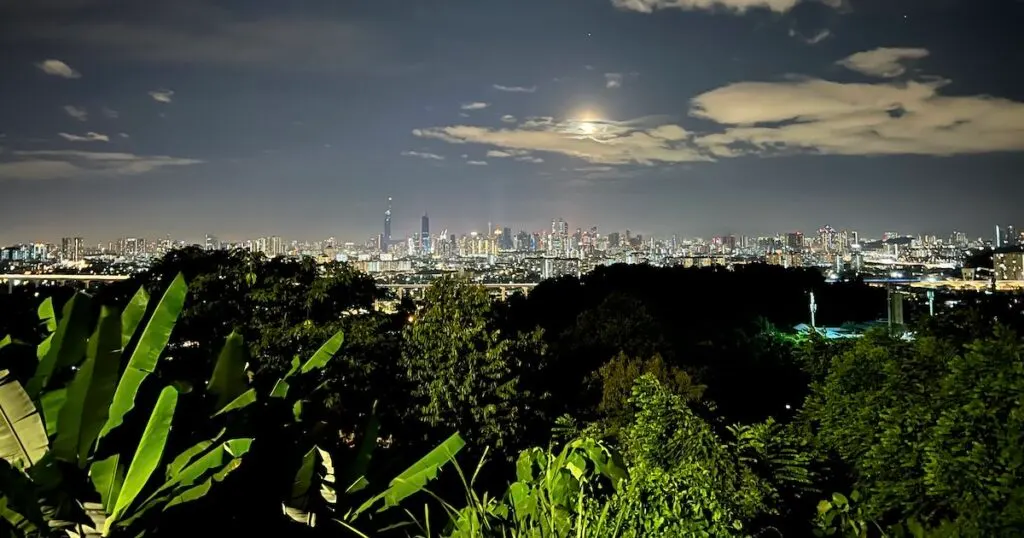
It’s not an official lookout with services, so make sure to drive and park carefully as there are many people crossing the roads.
14. Take in the views from the KL Tower (Menara Kuala Lumpur)
The KL Tower, or Menara Kuala Lumpur, is one of the best views in Kuala Lumpur.
At 421 metres tall, the building has a revolving restaurant and an observation deck (at 276 metres) with glass windows.

I ate at the restaurant, and aside from the revolving floor – which is awesome because you’re constantly given a different view of the city – the food was nothing special.
It’s a self-serve buffet, which is hilarious because with the revolving floor, I kept losing track of where my seats – or favourite dishes – were.
3-Day Kuala Lumpur Itinerary
With three days in Kuala Lumpur, you have plenty of time to visit the must-see sights (Petronas Towers and the Batu Caves), as well as take a streetfood tour.

Only visiting Kuala Lumpur for 2 days? Just use the first two days for this 3-day Kuala Lumpur itinerary…
Day 1
- Grab breakfast: Capitol Cafe in Bukit Bintang or Chow Kit are nice choices.
- Visit the Petronas Towers, with or without an entry ticket to the Skybridge.
- and grab lunch at Nasi Kindar Pelita.
- Take a Grab car to Petaling Street to try durian, mangosteen, and haggle for clothes and other knick-knacks – also visit the air-conditioned Central Market.
- End the day with street food in Jalan Alor – or book onto a street food tour (the earliest start time is 4pm) for 15+ tastings.
- If you still have energy, you can go bar-hopping in Chinatown: PS150 and Concubine are good spots.
Day 2:
- Visit the Batu Caves. You can self-guide or take a guided half-day Batu Caves tour.
- For lunch, grab wat tan hor at Pan Heong Restaurant in Batu Caves.
- In the afternoon, visit Kanching Falls (a seven-tiered waterfall) or take things easy by visiting the KL Tower or doing a cooking class at Limapulo: Baba Can Cook.
- In the evening, visit Thean Hou Temple.
Day 3:
Your third day is a good opportunity to follow up on any activities you missed on the previous days.
Alternatively, you might want to book a full-day tour to Taman Negara, Malaysia’s oldest rainforest, or Malacca, a UNESCO World Heritage city with delicious food and river cruises.
Options:
- Hire a car on Discover Cars to drive to Genting, visiting Chin Swee Caves Temple enroute.
- Take a day tour to Taman Negara – a hiking tour includes my favourite hike, Teresek Hill, or the traditional tour is less strenuous and visits the Canopy Walkway.
- Take a day tour to Malacca, a UNESCO city.
- Relax at the W Hotel WET Deck next to the Petronas Towers.
I hope you found my Kuala Lumpur itinerary useful! Let me know how you’re going to spend your three days in Kuala Lumpur… I’d love to hear from you.
Suggested reading for your Malaysia trip:
- Taman Negara guide – how to visit Malaysia’s oldest rainforest
- Perhentian Islands itinerary – remote, tropical paradise!

